

The Breeze
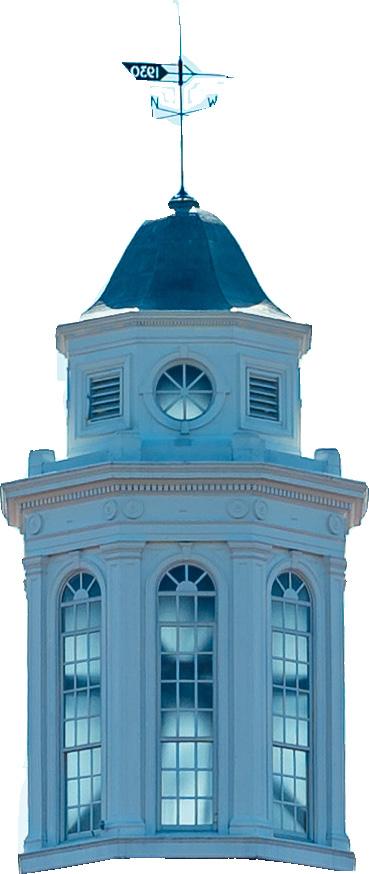



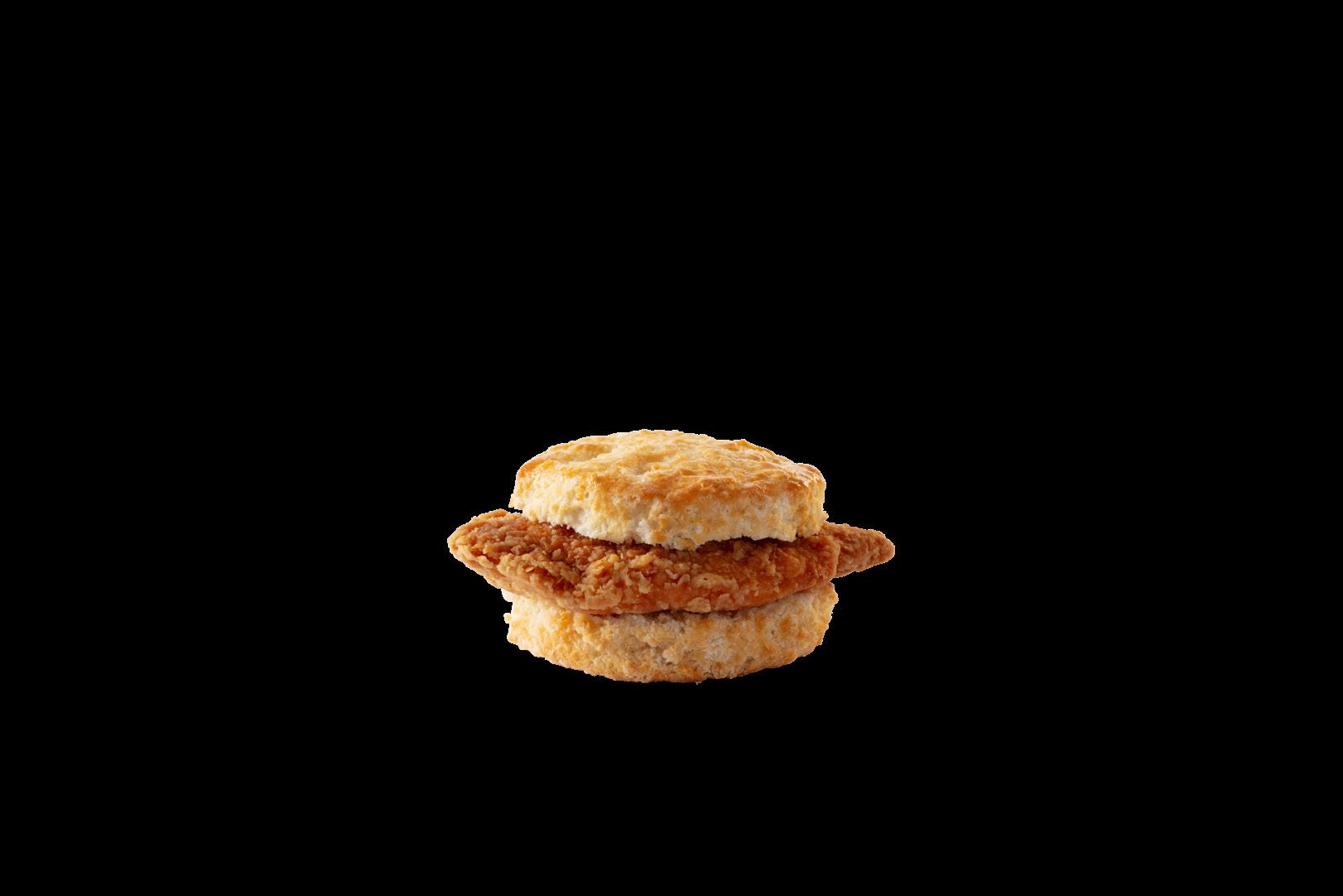



On the cover
Before May, student organizations across campus were able to reserve and use the Quad for events.
According to University Policy Committee (UPC) revisions to JMU public expression policy, student organizations are no longer able to reserve or use the Quad, among other university locations, for public expression. The new policy changes have caused confusion among students and faculty.
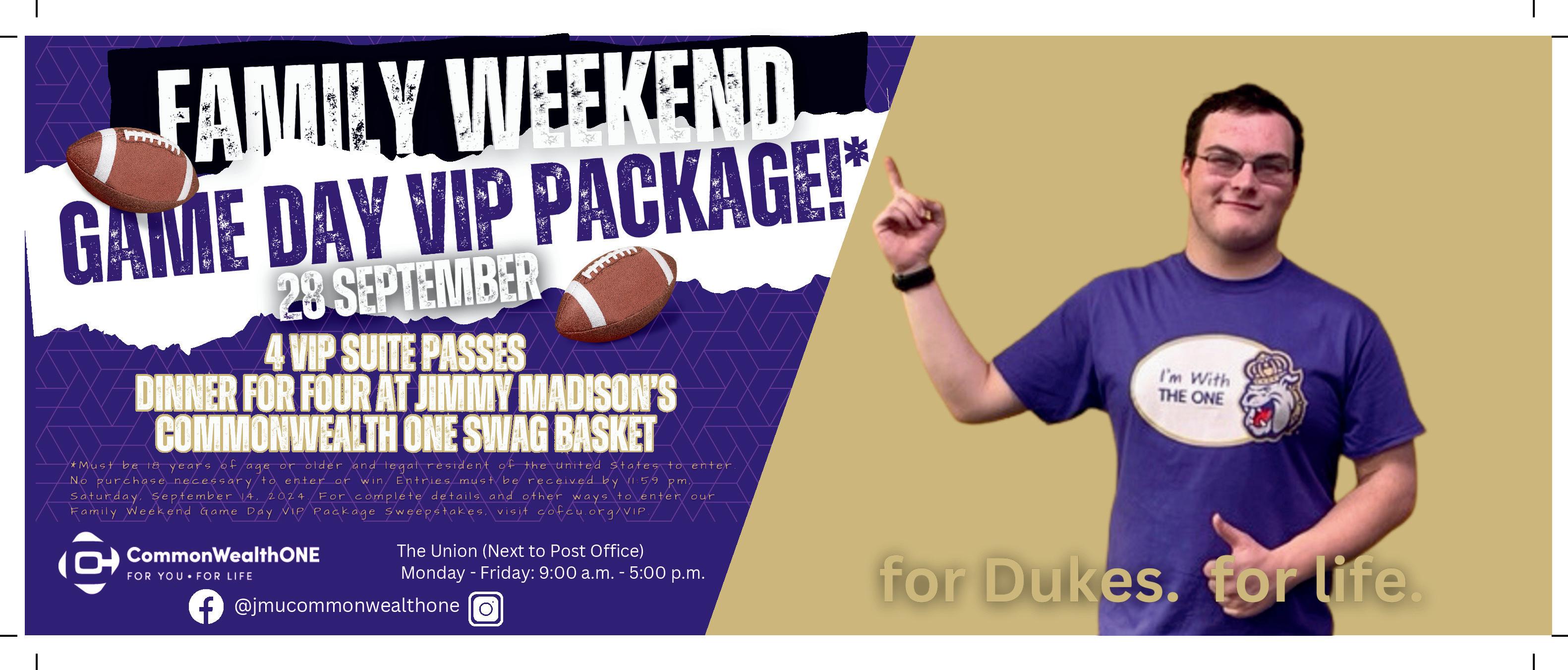
Mauser & Libby Addison

Tensions rise as new Quad policy and mask ID rule call free speech into question
By LIBBY ADDISON The Breeze
Almost 3,000 American flags lined across Festival Lawn Wednesday — roughly a 30-minute walk from their location last year on the Quad.
The Young America's Foundation (YAF) Never Forget Project is a memorial honoring those who died during the 9/11 terrorist attacks. JMU’s YAF chapter plants a flag for each life lost during 9/11.
Now, according to the University Policy Committee’s (UPC) recent policy changes, JMU YAF can no longer display the flags on the Quad.
In an email sent by Vice President for Student Affairs Tim Miller to JMU YAF, he wrote the Quad is solely reserved for university-sponsored events, according to the article on YAF’s website. He added that exceptions aren't typically made unless these events are connected to “federal holidays.”
JMU administrators offered an “extremely vague” explanation as to why this tradition was moved to East Campus from Main Campus, according to YAF's website.
When JMU YAF was first instructed to move their memorial to the Festival Lawn, JMU YAF President and junior Tristan
Jackson said he didn't know the university had plans for its own 9/11 memorial.
However, after a conversation with Miller that next week — on Tuesday — Jackson said he was informed JMU was now hosting its own 9/11 memorial on the Quad in addition to JMU YAF’s 9/11 memorial on Festival Lawn.
Jackson said the university’s decision to allow students to reserve Festival is a step in the right direction, but restricting the Quad and “reducing free speech” was on shakier grounds.
Despite thses setbacks, Jackson said JMU YAF still achieved its ultimate goal: representation, conversation and remembrance of those who died on Sept. 11, 2001.
Policy change recap
On Aug. 1, the new version of Policy 1121: Public Expression on Campus was released with 73 changes; most notably, restricting student and faculty use of outdoor university spaces (including the Quad), prohibiting signage on exterior-facing windows of campus buildings and requiring individuals wear masks or face coverings to present identification.
The policy changes were open to public review for 28 business days — Aug. 1 through Sept. 9 — which is 18 days longer than the usual time frame for public review, according to an email from Interim University President
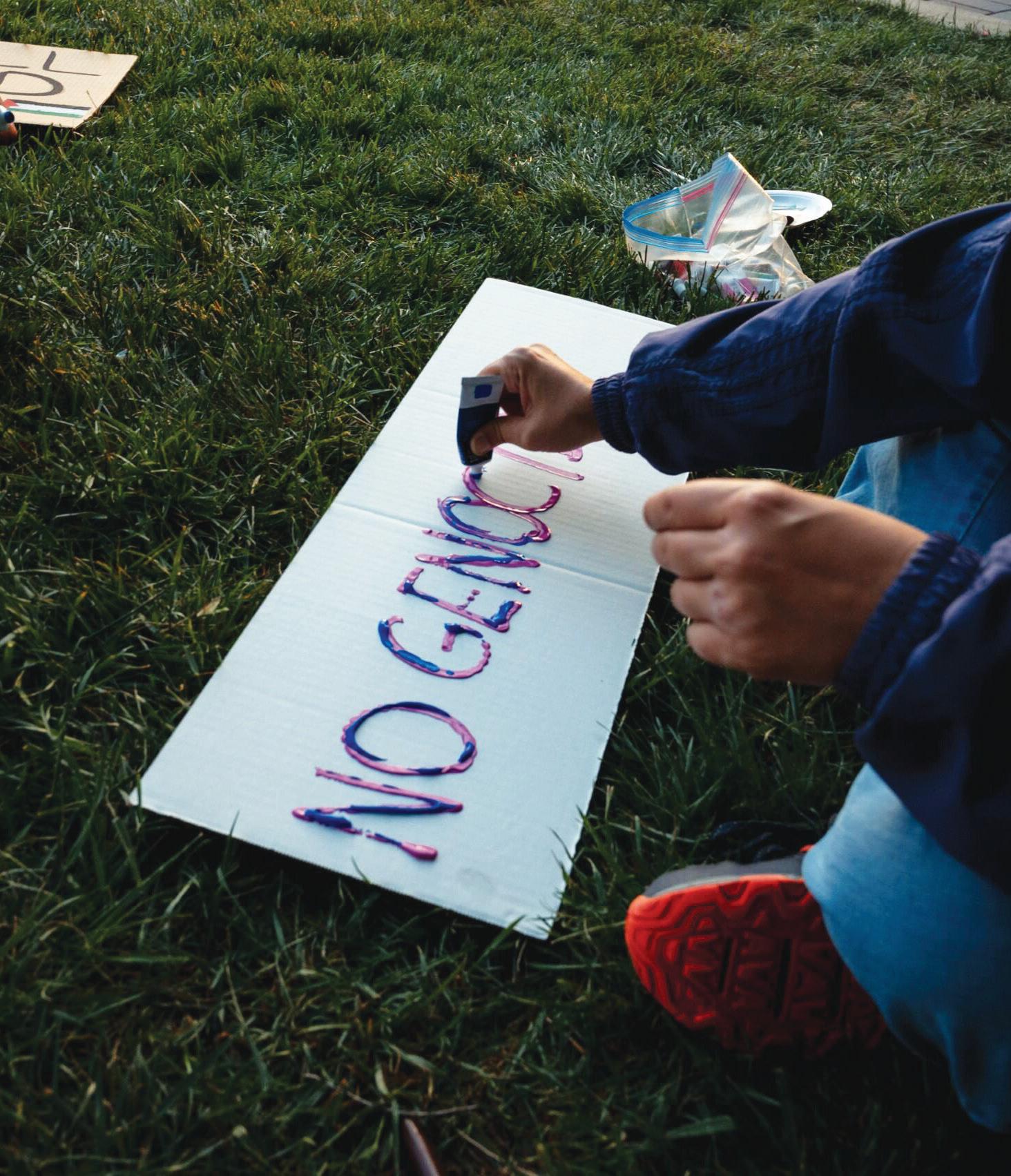
Charlie King on Sept. 4. In the email, King said the typical timeframe for such a policy change would be 10 business days.
In the email addressed to JMU faculty and staff, King was writing to “help ensure there is understanding regarding JMU’s updated policies.”
These policies were “fast-tracked” over the summer, which meant that it became necessary for the campus community “to adhere to new policy modifications,” King wrote.
King said fast-tracking doesn’t mean they were trying to modify the policies without transparency, but the opposite. The policy modifications were ready for review in spring 2024, but JMU's policy committee “chose to pause the process until the fall semester,” when faculty, staff and students officially returned to campus, King said.
The committee came to the conclusion it was appropriate to delay advancing the policies until after summer, “as many people would be away from campus and likely not accessing their email,” according to the email.
Faculty
Senate confusion
Faculty Senate members asked questions about the policy changes and jargon during their first meeting last Thursday. Miller and
Associate Vice President of Business Services
Towana Moore answered their questions on behalf of the policy committee.
As for the policy changes’ reasoning, Miller said there were inconsistencies across policy documents where “several different things actually conflicted with each other.”
Associate Professor of History Kristen McCleary asked how policy feedback will be addressed after Sept. 9. Moore responded the policy committee will take “pieces and parts of it they feel like should be included in the policy.”
McCleary asked a second question, requesting they distinguish what “affiliated” versus “un-affiliated” persons in the policy document exactly are, as she's “concerned” that people affiliated with JMU “may have fewer rights than unaffiliated.”
Miller responded that affiliated persons “are not supposed to have less rights,” and he “doesn’t know what that will end up looking like,” but acknowledged that her feedback is received. see POLICY , page 6

Until this school year, the Quad has been used by student organizations across campus, such as YAF's Never Forget Project in memorial of those who died during 9/11. Since JMU's University Policy Committee updated its policy changes over the summer, rules regarding public expression have shifted and student organizations are no longer able to use the Quad for public expression. Photos by Landon Shackelford / The Breeze
SGA discusses new dining plans, passes $711.25 in reserve fund resolutions

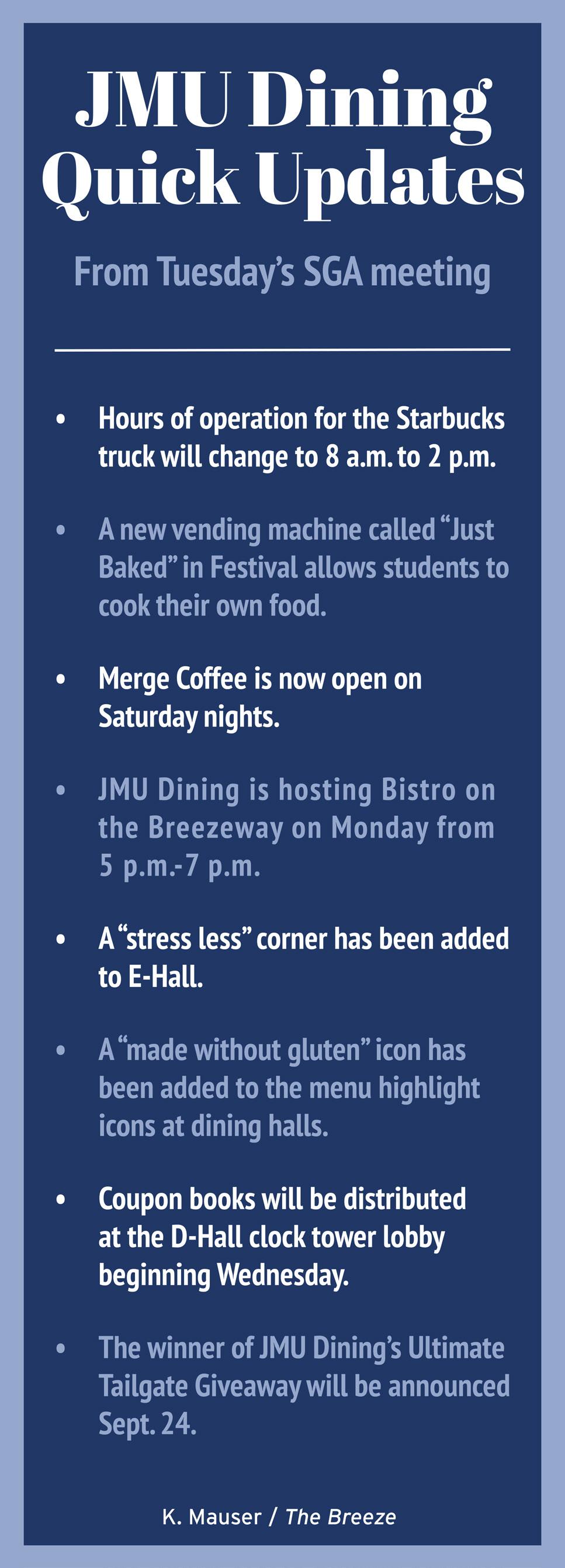

By SIXUAN WU
The Student Government Association (SGA) Senate received updates on on-campus expansion of dining services and adopted resolutions regarding reserve funds during its Tuesday meeting.
Changes to meal plans, service highlights
Director of Student Engagement Jenna Gray represented JMU Dining during Tuesday’s meeting to give a presentation on this year’s meal plan changes, as well as answer any questions and concerns surrounding the changes.
Gray said students can use their meal plan punches at D-Hall and E-Hall, as well as at on-campus non-dining hall retail locations offering 148 Duke Deals options or monetary equivalent food purchases of up to $7.
Aside from students who purchase the All Access Plus Plan — which allows them to use up to three Duke Deals a day — one of the biggest changes to this year’s meal plans is that students with any other plan are limited to two Duke Deals per day. This prevents students from “punching out,” or spending all of their remaining punches, at the end of the week like they’ve been able to in past years.
Gray said JMU Dining is aware students are figuring out how to operate their new meal plans and said while navigating these changes can be “challenging for everybody,” students also have the ability to “customize” their meal plans, as in whether to use their punches in dining halls or as Duke Deals.
“Yes, there are certain guidelines as it relates to the changing of Duke Deals or equivalency, depending on whether you have the three- or the two-per-day [plan], but other than that, you have the ability to customize those plans,” Gray said.
Gray said these changes were made based on feedback from “focus groups” and purchase history on punch use.
“When we did our focus groups, we asked: ‘On average, how many Duke Deals do you have per day?’ And that led us to this,” she said. “We also had a lot of students that were telling us they were tired of their meal [punches] expiring at the end of the week. So what we did is we instituted instead of a certain amount per week, you get a certain amount per day.”
Gray also explained changes to the Block 100, Block 75 and Block 50 plans, saying that because these meal plans are “voluntary plans” for commuter students, they allow students to use these meal punches for guests.
Following the presentation, Gray answered questions from the senators. Sen. and senior Ai Vy Le said many students worry their punches are going to waste because they’re not using each of their allocated two Duke Deals per day.
Gray said while JMU Dining does understand the concern, no changes will be made to the meal plans this academic year due to the plans already being approved by the state.
“Ultimately, it’s a matter of trying to find something that’s going to work for everyone,” she said. “I will say that we do hear you. We’ve had some people talk about other options, and we are taking those apart, and we are collecting that information. We are looking at other possibilities. Just continue to share your feedback with us.”
Health and Wellness Manager Hanna Serrano and Senior Marketing Coordinator Rachel Harr, along with Gray, also shared other highlights to dining services, including:
* Hours of operation for the Starbucks truck will change to 8 a.m. to 2 p.m.

* A new vending machine called “Just Baked” in Festival allows students to cook their own food with the click of a button.
* Merge Coffee is now open on Saturday nights.
* JMU Dining is hosting Bistro on the Breezeway on Monday from 5 p.m.-7 p.m. There will be a pop-up stand with food, activities and giveaways. Punches, Dining Dollars and FLEX will be accepted at this event.
* A “stress less” corner has been added to E-Hall. This is a space that serves packaged items that omit peanuts, tree nuts, gluten and dairy.
* A “made without gluten” icon has been added to the menu highlight icons at dining halls. Gluten-free foods are also available upon request at on-campus retail locations.
* Coupon books will be distributed at the D-Hall clock tower lobby beginning Wednesday. This year’s coupon book has a $160 value and is available for students with commuter meal plans. Distribution times are Wednesday from noon to 2:30 p.m., Thursday from 11 a.m. to 1:30 p.m. and Friday from 11 a.m. to 4 p.m. Students must present a photo ID and their JMU ID number to pick up the coupon books.
* The winner of JMU Dining’s Ultimate Tailgate Giveaway will be announced Sept. 24. Resident meal plan holders are automatically entered to win. This year’s prize includes a JMU tailgate tent, a $200 JMU Bookstore gift card and JMU merch.
SGA adopts resolutions on reserve funds
The Senate unanimously adopted a resolution on a reserve fund request for SGA tabling supplies.
Student Body President and senior Brielle Lacroix said reserve funding is leftover money from the previous year’s budget that can be used by the SGA to finance things such as supplies for internal organizations.
The resolution for tabling supplies, submitted by Sen. and junior Jahnavi Muthyala, was for $531 to pay for two serged closedback table throws, clear acrylic sign holders and a pop-up canopy tent to be used for future SGA events and tablings.
“This will provide more of a professional and unified look for us, and all these are things you can use for every time we table for forever,” Lacroix said. “I think it’s a really good investment for us.”
The SGA unanimously approved a $180.25 reserve fund request for acrylic display stands for SGA name plates. Sen. and junior Ella Stotzky, who submitted the resolution, said the name plates are “sustainable in the long run” and make it easier for SGA’s chief of staff to take minutes at each meeting.
“This brings in an air of professionalism, and I feel like as our members grow, we need certain things to make sure that [taking minutes] is a very smooth project,” said Muthyala, who was in favor of the resolution.
Sen. and sophomore Nathanael Crouse raised concerns about the resolution, saying implementation of the name plates could be “tricky.”
“Members will invariably forget them or leave them in the office,” he said. “I just feel like it’s not going to be as effective as we imagine it to be.”
Lacroix said the SGA used to implement a similar system with paper name tags that she thought “worked really well.”
“It’s a pretty standard thing; we’ve had this process before, we are now just making it a little bit nicer,” she said.
CONTACT Sixuan Wu at thebreezeculture@gmail.com. For more coverage of JMU and Harrisonburg news, follow the news desk on X @TheBreezeJMU and on Instagram @BreezeJMU.
The Breeze
The Student Government Association (SGA) Senate unanimously approved two reserve fund requests for SGA tabling supplies and name plates at its meeting Tuesday. Photos by Reed Marchese / The Breeze

from POLICY, page 4
Student leaders react
Senior Kin Thomas, president of Young Democratic Socialists of America (YDSA) who uses they/them pronouns, said they believe the university limits students’ abilities to protest on the Quad with these policy changes. They added they still believe the changes violate the First Amendment considering it’s a public, open campus.
“This is a public university,” they said. “We pay taxes.”
YDSA was one of the organizations that organized the pro-Palestinian protests which took place on the Quad in May.
Other student leaders differ, namely those in the Student Government Association (SGA).
Student Body President and senior Brielle Lacroix said there are “lots of places on campus that students can use to hold vigils or hold places to support whatever causes that they want to.”
Junior Kieran Fensterwald, SGA Senate speaker, said he believed the policies were implemented as a safety precaution, given the recent violence happening on college campuses around the country sparked because of proPalestinian protests and counterprotests.
Both Fensterwald and Lacroix think the “overarching concern” is the policies are influenced by external factors, such as state and federal laws that impact what JMU can and can’t allow on campus, especially since it ’s a federally funded institution.
Lacroix said there are two ways to look at the mask policy: “One being that there are
people that use a mask to conceal their identity for nefarious purposes, and that is what this policy was directed towards.”
She added this policy change was also directly pulled from a state law that was passed, and it’s essentially a compliance policy for JMU.
She said there are exemptions for people who are wearing masks as a way to protect themselves from illness or for religious purposes, but ultimately “the policy is aimed at people who are using a mask specifically to protect their identity, and no one will get in trouble if they do show identification.”
He said that the policy changes will help to “keep the Quad a sacred and a place of historical significance for the campus,” but he said he thinks the “overarching concerns” are the outside stressors from local, state and federal politics affecting JMU.
“It’s a shame that we can’t use these spaces anymore, but there are outside opportunities like … using the other locations on campus,” he said.
Ultimately, Fensterwald urged Dukes to vote in November elections, which he said would enact the most change.
“If you disagree with something that’s happening on the state level, the best way to do that is to hold those people accountable and get out and vote,” Fensterwald said.
CONTACT Libby Addison at breezenews@gmail.com. For more coverage of JMU and Harrisonburg news, follow the news desk on X @TheBreezeJMU and on Instagram @BreezeJMU.
Sept. 11, 2001, remembered through flags on the Quad and Festival Lawn
By SADIE MCCLAIN
The Breeze
Festival Lawn was chilly and covered in dew as students gathered Wednesday morning, flags in hand, to memorialize those who died during the Sept. 11, 2001, terrorist attacks.
Young America’s Foundation (YAF) has brought the Never Forget Project to college campuses nationwide for over 21 years, according to its website. This will be the JMU chapter’s second year participating, joining 77 other universities in this tradition.
Seven student volunteers arrived at Festival Lawn on East Campus before 6 a.m. and spent five hours planting almost 3,000 American flags in the ground: one flag for each person killed on 9/11. Volunteers were instructed to obey the United States Flag Code by not laying the flags on the ground and removing them at sunset.
“We are doing this event to honor and remember the victims of the attacks on September 11, 2001,” junior Tristan Jackson, president of YAF at JMU, said. “A vast majority of students were born after 2001 and were not alive when this tragedy occurred.”
YAF is a conservative student organization that looks to foster patriotism and help young conservatives take action, according to its website.
Junior Katie Caldwell said she volunteered to help put up flags because it’s important to her to “never forget what happened” on 9/11.
“I think it’s a day to rally together as Americans and remember the terrible things and all the people and lives that were lost that day,” she said.
While few current JMU students were alive to witness the hijacking of four commercial airline flights and the attacks on the Twin Towers and Pentagon, 9/11’s impact is not lost on younger students such as freshman Noel MacMahon.
“I’m from New York, born and raised, so I’ve
grown up in the aftermath of 9/11 even though I wasn’t alive for it. My dad was a cop in the city during it,” MacMahon said. “While my father was helping with the cleanup operation and with digging, my grandfather was helping put back up telephone lines, so in my family it’s always been a very big topic.”
Volunteers were recruited not only from JMU’s chapter of YAF but also from College Republicans, the Network of enlightened Women (NeW) and any other students willing to donate their time, with Jackson’s invitation spread through GroupMe chats and mentioned in student meetings.
Last year, the flags were planted on The Quad. However, policy changes new to this year restricting the locations students can use for public expression have caused the project to move to Festival Lawn.
“We originally contacted Dr. Miller to request the Quad for the project; however, he said that the Quad was only going to be reservable for flag displays on federal holidays, prior to the policy revisions,” Jackson said.
Vice President for Student Affairs Tim Miller clarified to Jackson that student organizations were not allowed to table, reserve or flier on the Quad due to a revision to the new policy change that Jackson said was made “the exact night before the deadline, September ninth.”
Despite moving YAF’s display from the Quad, Miller and the Board of Visitors (BoV) quickly organized an identical event, gathering members of JMU Reserve Officers’ Training Corps (ROTC) and Violence Against Law Enforcement Officers (VALOR) to plant 2,977 flags on the Quad at the same time YAF was on Festival Lawn.
“It was a little short notice … It was two days ago that we knew this event was going on,” JMU senior and ROTC Battalion Commander Layne Jessup said.

He was not given a reason why ROTC was doing this event this year — he said he believes they were originally going to plant their flags on East Campus — and was unaware of YAF’s coinciding event.
“It’s an important anniversary in the country, it’s also important [because] JMU lost four individuals that are affiliated with this university on that day, and it’s an important opportunity for us to honor their lives,” Miller said. “Now that the Quad has different rules associated with it, the only way this event could have happened out here is if it was sponsored by the university, so we wanted to make sure that it happened.”
Miller said he offered YAF Festival Lawn instead of the Quad, and YAF declined at first, then agreed yesterday. Jackson said he didn’t express disinterest in Festival Lawn, only that
he fought to keep the event on the Quad until informed about the policy revisions.
“We asked Dr. Miller to send us a copy of the policy revision. He did not,” Jackson said.
Miller said JMU is excited to honor 9/11 and there will “just be two ways that we’re honoring it.”
“I know this means a lot to a lot of people,” Jessup said, “and it’s more than placing flags, it’s remembering those who are not with us here today.”
CONTACT Sadie McClain at mcclaisd@dukes.jmu.edu. For more coverage of JMU and Harrisonburg news, follow the news desk on X @TheBreezeJMU and on Instagram @BreezeJMU.
On Festival Lawn, almost 3,000 flags were planted to represent each person who died during the Sept. 11, 2001 terrorist attacks. Landon Shackelford / The Breeze
The policy changes notably restrict use of outdoor spaces like the Quad, banning signage on building windows and requiring ID from individuals wearing masks or face coverings.
Landon Shackelford / The Breeze
New 24/7 wellness vending machine expands medication access for students

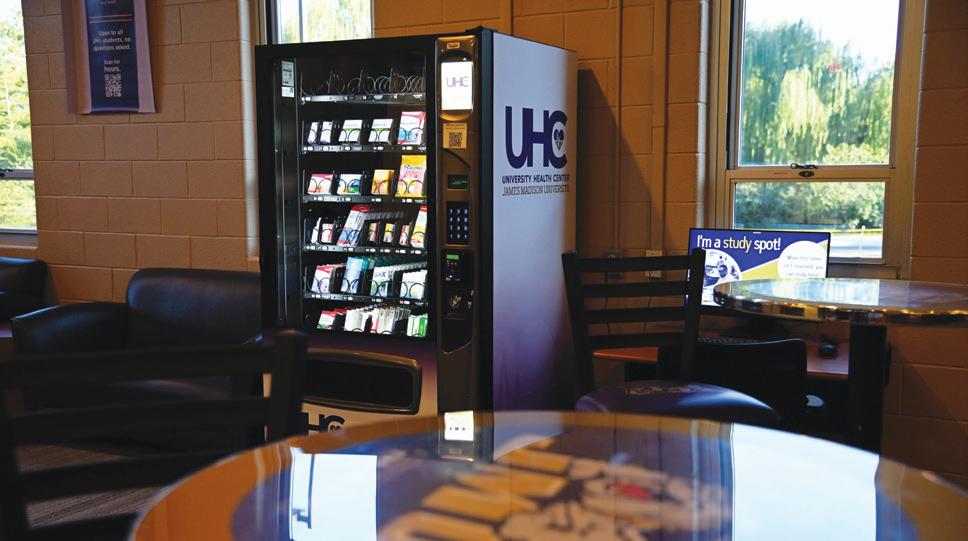
By JOELLE MCKENZIE The Breeze
The University Health Center (UHC) installed a vending machine containing various over-the-counter (OTC) medications and other wellness products last May to help students access affordable healthcare during their study breaks.
Located in Taylor Down Under (TDU), the vending machines accept debit and credit cards, Apple Pay and JACard (FLEX) as payment methods, with prices ranging from $2 acetaminophen to $13 antigen Covid tests. Students have access to the vending machine 24/7, as TDU is open all day and night.
“Our prices, we feel, are better than Walmart, CVS and things like that, even on campus,” Associate Director of Business Operations Chris Ouren said. “Because we’re selling generic items, we’re able to keep it cheaper than others.”
Included in these vending machines are Covid tests, DayQuil, Ibuprofen, Midol and other wellness items, according to its website. These items are replenished every few days to ensure availability.
Ouren said the machine has had at least five to six sales per day, with an occasional peak of 20 sales. He added that every

purchase allows students to access “some sort of benefit” that wasn’t available on campus before last May.
“It’s just something we wanted to do to give students access to items that are in our pharmacy when it’s closed,” Ouren said.
Junior nursing major Ally Pearson said she hopes the UHC adds a wellness vending machine to East Campus so students don’t have to walk as far. TDU is located on Main Campus, which can be a 20-minute walk from East.
Ouren said the UHC is looking into other locations to implement wellness vending machines, including potentials on East Campus. “Usage and feedback on all of the machines will be carefully monitored as future locations are considered,” according to the UHC website.
He added that the UHC checked Rose Library as a potential location, but the 24-hour study area in the library doesn’t have enough space for the vending machine.
“I think it’s great,” Pearson said. “People need medications.”
CONTACT Joelle McKenzie at mckenzjl@dukes.jmu.edu. For more coverage of JMU and Harrisonburg news, follow the news desk on X @TheBreezeJMU and on Instagram @BreezeJMU.

JMU students can now visit Taylor Down Under at any time to buy wellness items. Photos by April Weber / The Breeze


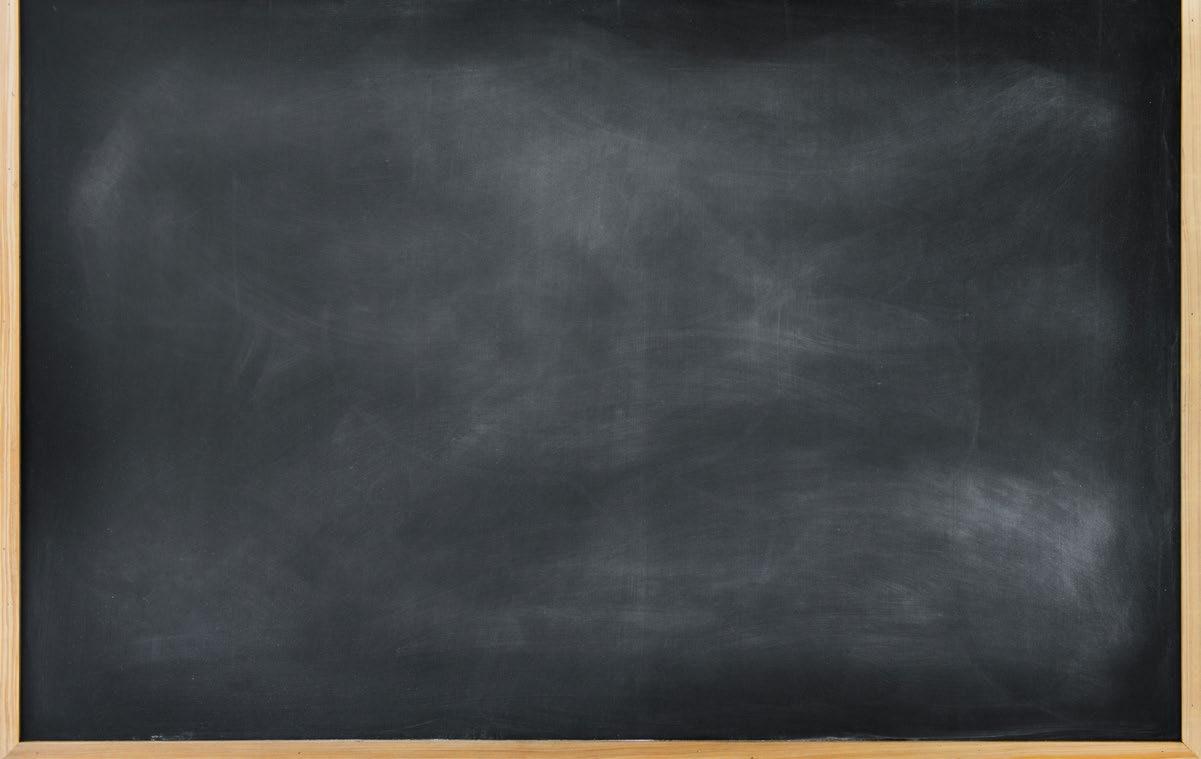


CULTURE
Abby Camp & Sixuan Wu
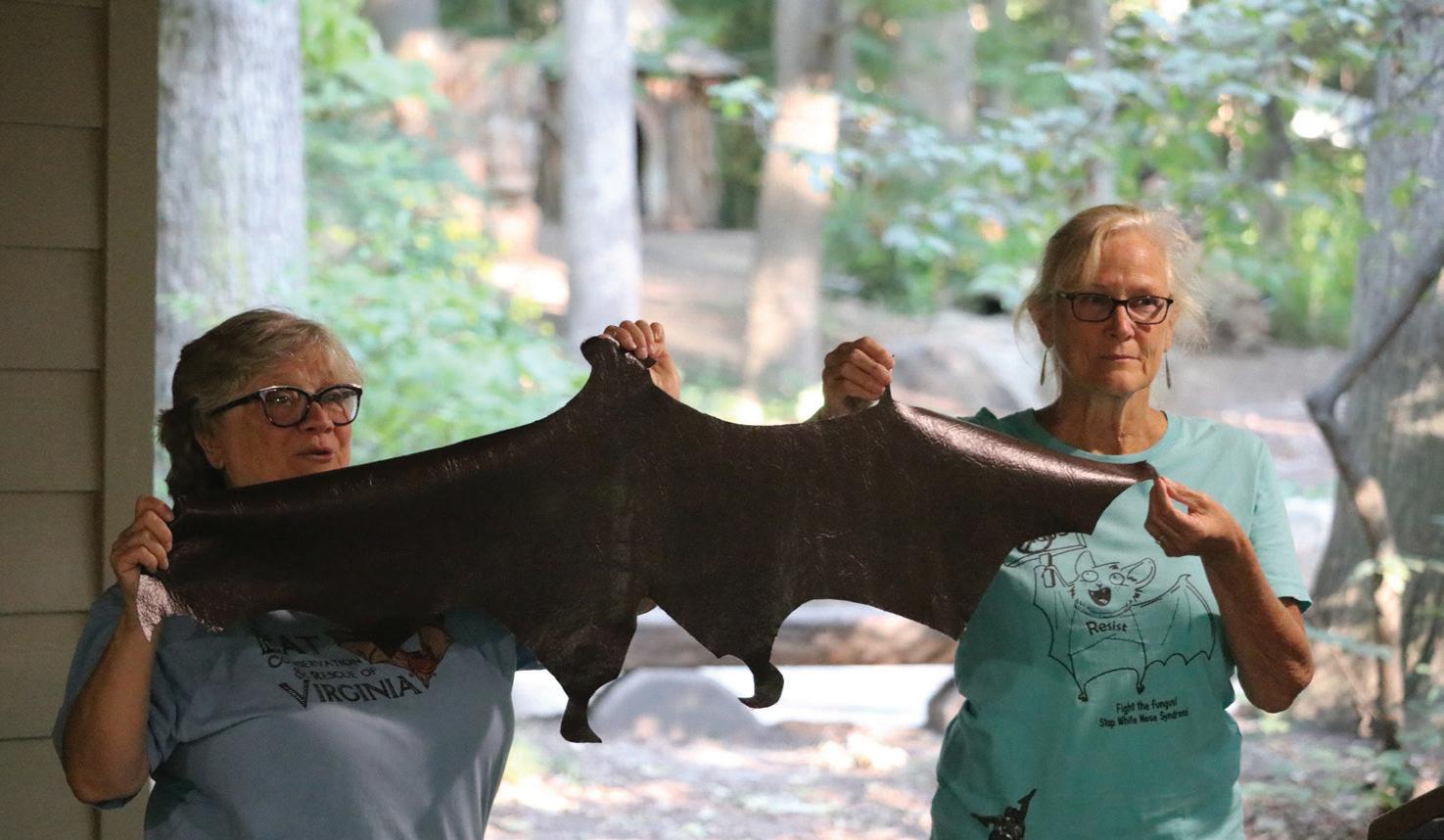
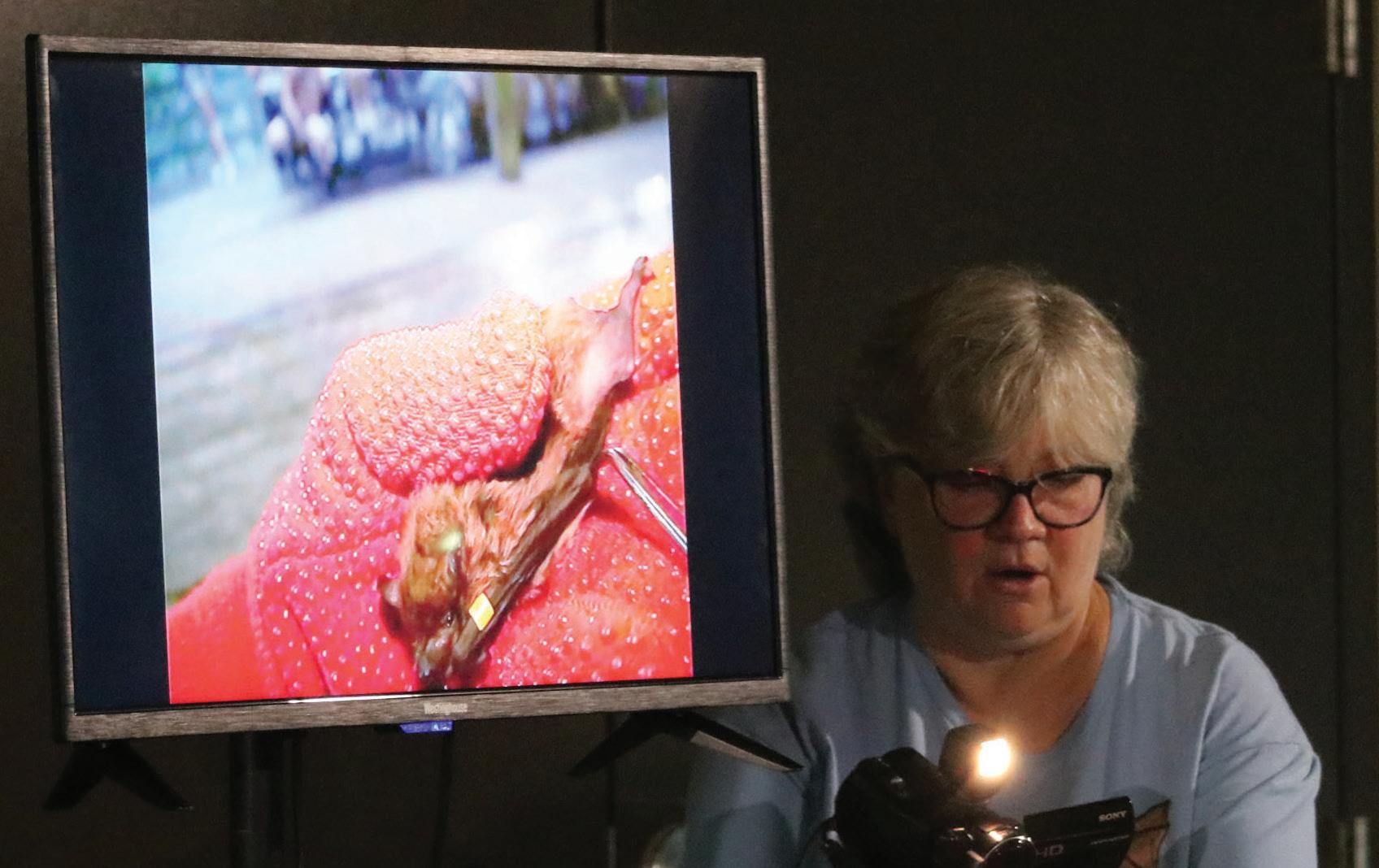

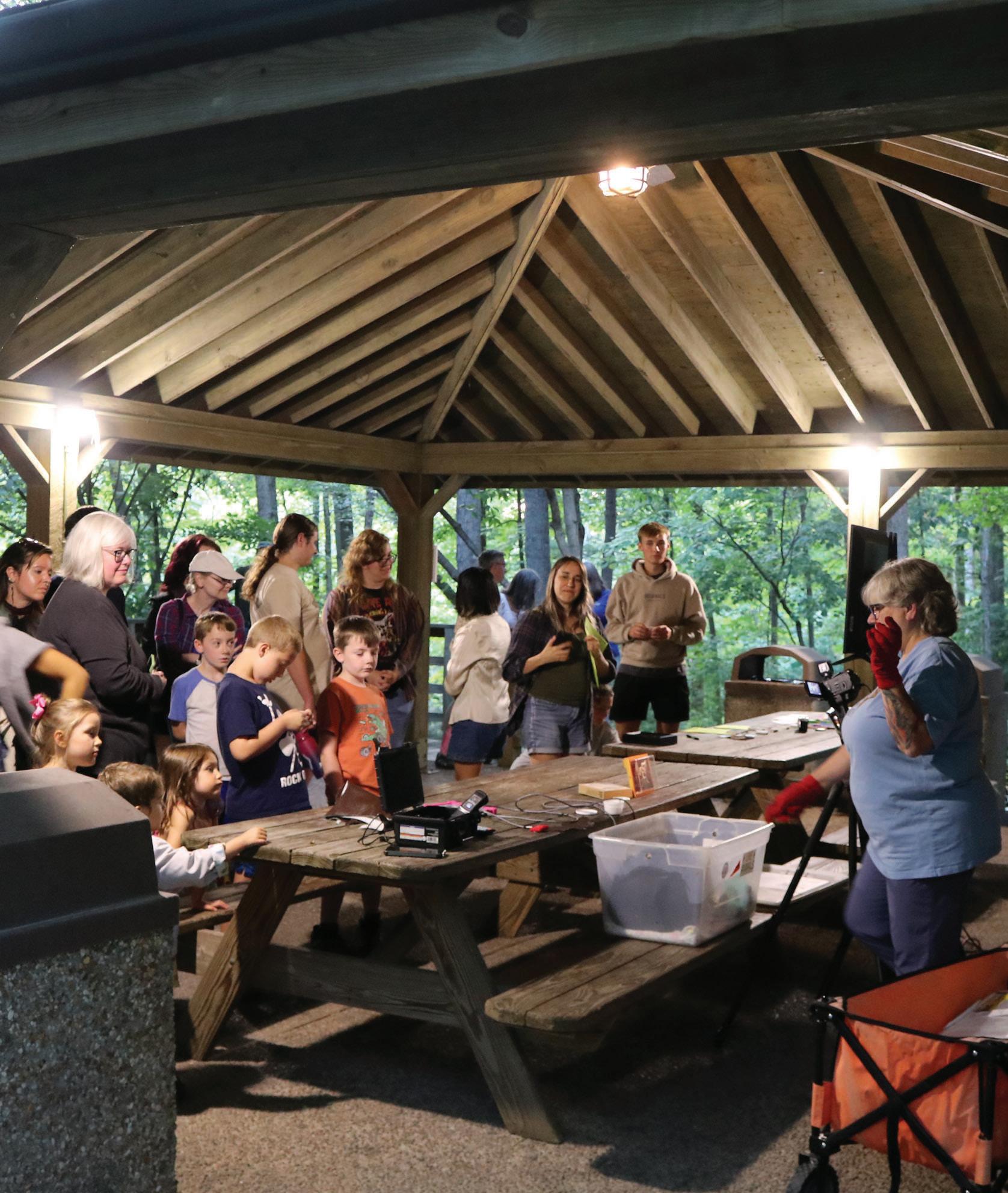
Arboretum hosts live bat presentation, drawing awareness to their health concerns
By EVAN MOODY The Breeze
Throughout JMU’s history, campus has been some captivating creatures’ habitat — notably the Quad Cats and a live Duke Dog. It’s those who trek to the depths of the arboretum, however, that have the chance to witness one of campus’ most mesmerizing mammals take flight: bats.
On Friday, the Edith J. Carrier Arboretum hosted “Evening with Bats!” in collaboration with Virginia Master Naturalists and Bat Conservation & Rescue of Virginia (BCRV). At the event, viewers looked to the sky to catch a glimpse of bats emerging for their evening hunt.
Volunteers hosted a call station where participants could learn about the acoustic monitoring of the bats at pondside. Around 10 bats flew over visitors, crisscrossing through the air before that evening’s sunset.
BCRV President and Founder Leslie Sturges said the arboretum is special because it provides bats a habitat in the middle of an urban area.
“We know there are bats in Harrisonburg, and they’re going to use whatever habitat is available to them,” Sturges said. “With the arboretum being this wonderful green space with large trees within an urban area, it makes it a bat magnet.”
While it’s difficult to determine just how many bats call the arboretum home, multiple species inhabit the area, such as the big brown
bat (Eptesicus fuscus) and tri-colored bat (Perimyotis subflavus). Sturges said having the species and live viewing events within a populated urban area is a rare opportunity for bat enthusiasts.
The “Evening with Bats!” series began April 19, following a lone event during the ‘23-24 academic year. Since April, participants could trek the arboretum grounds every first and third Friday for bat viewings with the final event on Sept. 20.
While last year didn’t yield many bat sightings, this summer’s series has been more successful.
Arboretum Marketing and PR Specialist Ivy Makia said the program has drawn a consistent number of roughly 20 viewers and lets them know what the area has to offer.
“One of our biggest missions this year is trying to get more students out here,” Makia said.
With this year marking the arboretum’s 35-year anniversary, Makia also said she wants to offer more free programs similar to “Evening with Bats!” to let every Duke know about the space and experience it without payment obstacles.
This year, an “Evening with Bats!” shattered its expectations and saw around 80 visitors during one of its events, Makia said.
This past Friday, around 15 attendees were present, including returning participant and junior Atticus Cooper, who uses they/them pronouns. Having been to a few prior events, Cooper wishes the series was more regular and hopes it will return next year.
Cooper enjoyed the program’s educational side, citing that most people don’t understand just how important bats are to the surrounding environments — notably the animal’s role in pest consumption and pollination. Cooper also said bat-focused programs can “strike an interest” in people to learn more about the flying mammals.
Lucky for Cooper, Friday also included the first “Go Bats!” event prior to the pondside viewing, which included a close-up view of live bats for participants to learn about the animals they would see flying above in more detail. Sturges conducted the event in the arboretum’s pavilion.
Sturges presented multiple bats and fed them worms and other animal treats throughout the demonstration. Also included were bat facts, clarifications and jokes. Coloring sheets, handouts, stickers and more were provided for anyone looking to take a piece of knowledge or fun home.
Mentioned throughout the presentation was White-Nose Syndrome — a disease caused by a fungus responsible for killing millions of bats in North America, according to the National Park Service. The tri-colored bat is currently under review for listing as a federally endangered species because of the disease; the species regularly appears at the arboretum.
“We’re very excited to see [the tri-colored bat] as often as we do,” Sturges said. “You can literally see that there’s this tiny bat flying around with the bigger ones.”
Sturges said nearly every tri-colored bat she’s admitted into rehabilitation during the past five years has been from Harrisonburg. Throughout the demonstration, attendees asked questions about the disease and what they could do to help stop its spread.
According to the White-Nose Syndrome Response Team, learning about bats and their importance to the environment is the first step individuals can take in their community to help fight against the syndrome. By the end of her demonstration, Sturges was surrounded by compassionate onlookers, some in bat-themed clothing, drawn in by their love and curiosity for the creatures.
Teaching people about bats in their natural environment is one of Sturges’ primary goals. Programs like “Evening with Bats!” getting people outside to observe the flying mammals is an achievement on its own, she said.
While it’s nice to hear about bats in a library or classroom — where Sturges also conducts presentations — she said going outside to listen to their allocation calls and witness how they interact socially in the summer sky “just adds a layer of excitement and understanding.”
CONTACT Evan Moody at moodyte@dukes.jmu.edu. For more on the culture, arts and lifestyle of the JMU and Harrisonburg communities, follow the culture desk on X @TheBreezeJMU and on Instagram @BreezeJMU.
Presentation leaders spoke on bat biology. Photos courtesy of Edith J. Carrier Arboretum
Arboretum employees informed the audience of a fatal bat disease, White-Nose Syndrome. Harrisonburg residents and JMU students alike attended the bats’ release.
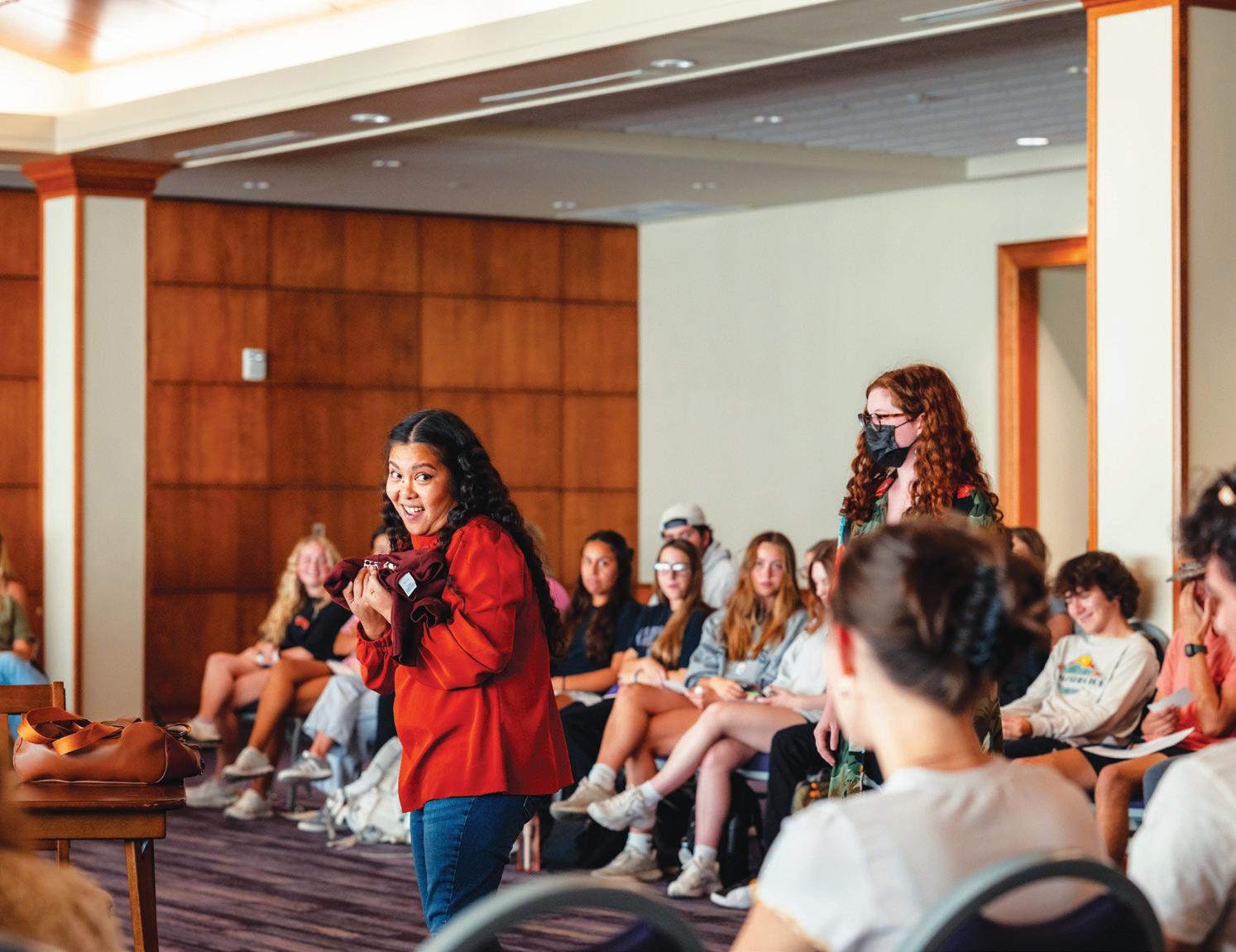


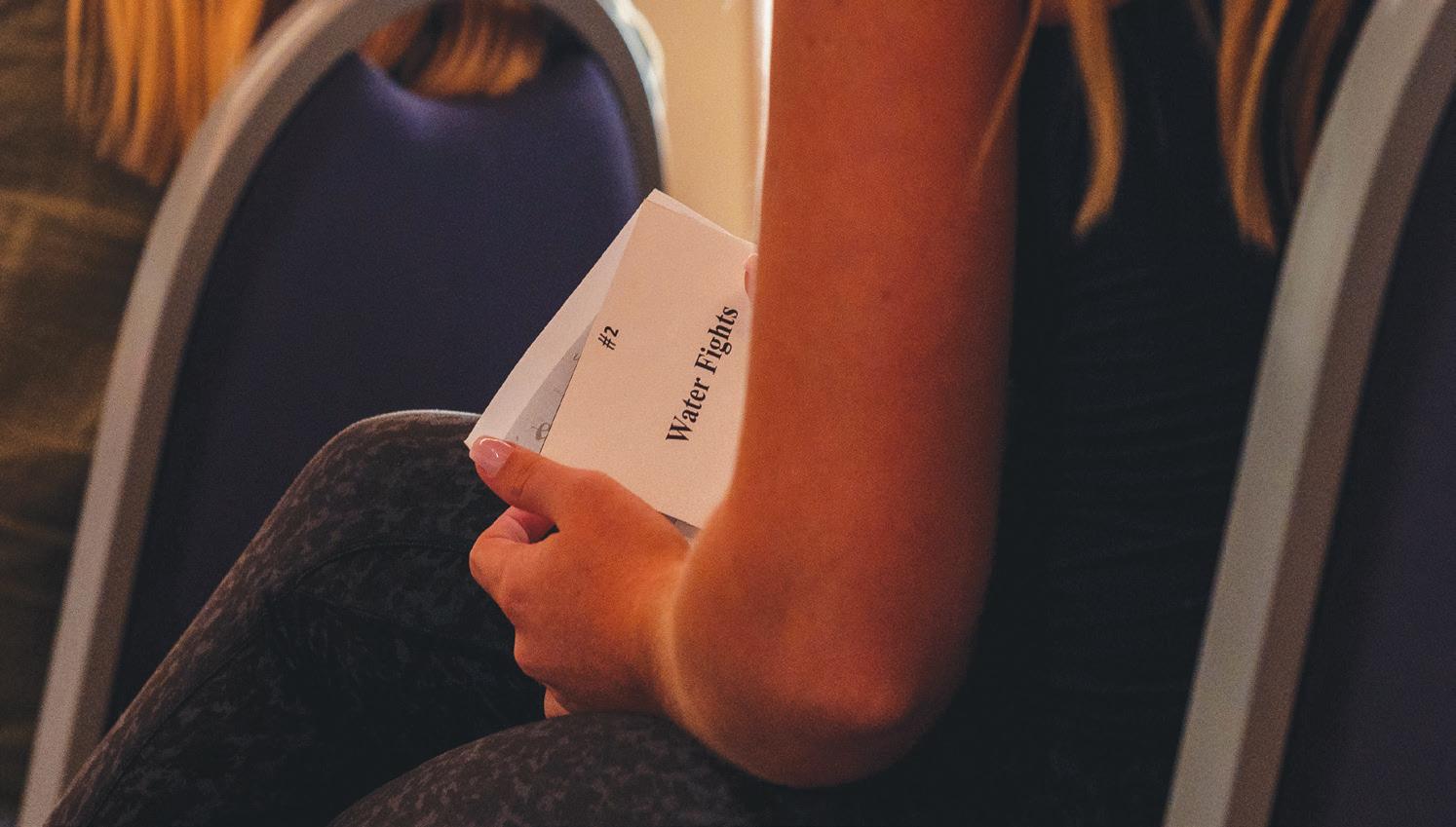
Norfolk theater brings JMU ‘Every Brilliant Thing’
By ASHLEE THOMPSON The Breeze
Editor’s Note: This story contains mentions of mental health and suicide that may be triggering for some readers. If you or someone you know is struggling with their mental health in any way, please visit the American Psychological Association’s website or call 988.
As audience members took their seats in preparation for a performance about mental health, they were handed a slip of paper with a seemingly random phrase and a number ranging from one to one million.
Little did they know they would soon be as important to this production as the main character.
Norfolk-based Virginia Stage Company (VSC) brought its one-man play, “Every Brilliant Thing,” to JMU on Tuesday as part of its Sentara Health-sponsored tour across the state. Taking place on the third floor of D-Hall in the Hall of Presidents, the play’s layout took a unique approach with the audience sitting in a large circular formation surrounding all four sides of the actor and her props.
The comedy-drama play follows main character Anna, played by VSC actor Anna Sosa, and her struggles growing up with a mother who has suicidal depression. Beginning at 7 years old, Anna creates a numbered, handwritten list of things worth living for in order to cheer up her mother, who’s been hospitalized multiple times due to suicide attempts. As Anna grows up and hits milestones, the list grows with her.
“A lot of us that are part of this project have [experienced] suicide some way in our lives,” Sosa said. “Whether it’s friends or family or our own personal struggle, I’m not alone in that, which is part of the reason why this show is so important.”
As the show progressed, audience participation became a crucial part of the production. When Sosa said the number on someone’s paper they were handed as they entered, they had to yell out what it read.
“Number 1,” Sosa yelled during a scene. Across the room, someone shouted, “Ice cream!” This occurred throughout the entire one-hour duration until the list was complete.
The audience participation went further than just shout-outs. Certain spectators were called to the floor to play significant roles in Anna’s life, such as her father, a veterinarian, a professor, a sock puppet and her love interest. Audience members had to improvise their way through their scene with help from Sosa.
One audience member, who played a teacher with a sock puppet, was given a microphone and a sock and was tasked with cheering up a 7-yearold Anna.
“I can’t imagine this show without the participation,” Sosa said. “It allows everyone to
see themselves in the various components of the show.”
Sophomore economics major Zach Marks attended the play to earn a wellness passport credit for his Health 100 class. He left with an acting credit.
Marks was chosen to play Sam, Anna’s future husband she met in college. He acted through their meet-cute, proposal and eventual divorce without any preparation. Sam is an important character to the story, being the one who helped Anna continue and finish her list — after it was forgotten after high school — and encouraged her to talk with a therapist.
“I thought it was really sweet, everything [Sam] did, reaching out and continuing the list and trying to help her be better,” Marks said. “I wasn’t sure what to expect, but I learned there’s a lot of good things in the world.”
The play focused on various relationships in Anna’s life and how they impacted her, with Sam helping her realize she buried a lot of her familial trauma without realizing.
“If you lived your whole life without feeling crushingly depressed,” Anna said during the play, “then you probably haven’t been paying attention.”
In addition to the heavy topics and lessons taught throughout the show, the University Counseling Center was present to answer any questions and provide information about JMU’s mental health resources.
Psychoeducation outreach specialist Karla Kale thought “Every Brilliant Thing” was important to show on campus to “bring awareness” and “destigmatize” discussions about suicide and mental health, especially as this week is National Suicide Prevention Week, she said.
“We want to make sure folks are aware of the resources and that help is available,” Kale said. “The JMU Counseling Center is a fantastic resource. We are free and confidential to students if they’re looking for support.”
One of the play’s final scenes sees Anna attend a support group to talk about her mother’s passing. She recalls finding her list again. Anna goes home and finishes the list up to one million items, with the last bullet point saying, “playing vinyl records,” something she and her dad bonded over.
“If anyone here has had thoughts of suicide, do not do it,” Sosa said during a monologue. “[Life] may not be brilliant, but things get better.”
CONTACT Ashlee Thompson at thomp6ab@dukes.jmu.edu. For more on the culture, arts and lifestyle of the JMU and Harrisonburg communities, follow the culture desk on X @TheBreezeJMU and on Instagram @BreezeJMU.
Actors called on audience members by the number provided to them at the show’s start.
“Every Brilliant Thing” is a comedy-drama that’s toured across Virginia, sponsored by Sentara Health.
JMU students, faculty and community members who attended the play were called onto stage throughout the show as an interactive experience.
“Every Brilliant Thing” follows main character Anna, played by Anna Sosa, and her struggles growing up with a mother with suicidal depression. Photos by Landon Shackelford / The Breeze
‘Music
is a language in itself’
JMU alumnus Matthew Mozingo uses music to stoke connections, shed light on life



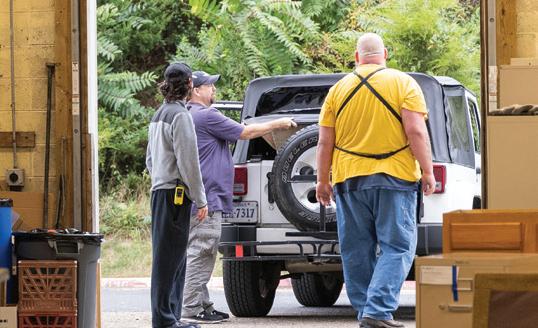

By SIXUAN WU The Breeze
“But right in front of you / Could be headed to the moon / Reflecting the source of your light.”
Like how the moon reflects the sunlight, as depicted in the lyrics of “Luna,” many aspects of ourselves are also reflected through mediums we connect with. For local artist and songwriter Matthew Mozingo (’23), music is the means through which he conveys his worldview.
“Music to me is a form of expression. It’s a form of love. It’s a form of connection,” Mozingo said.
He said he’s done music all his life — ever since sitting in his uncle’s lap and watching him strum the guitar as a toddler. At 9 years old, Mozingo started taking guitar lessons and was then prompted into singing by his guitar teacher. In fifth grade, he formed a band with friends and they wrote songs and performed around the area.
After graduating from JMU with a degree in middle grades education, Mozingo now writes music and performs full-time in the Harrisonburg-Rockingham County area.
Mozingo said the creation process of each song is different and depends on what triggers his inspiration.
“There are multiple processes I can tap into and be a part of, and I think that’s super magical about songwriting,” he said. “One day, I could come up with a progression on the guitar and write a song using those chords. Another day, I could find a beat online that I like, and I could write to that. Another day, I could write a capella, which I did once on the interstate driving to a studio session — I just wrote a song in my head, basically by singing out loud and then crafting the music around the vocal stuff that I came up with.”
Since 2017, Mozingo has released four albums, as well as several EPs, singles and features, totaling nearly 100 songs. His styles

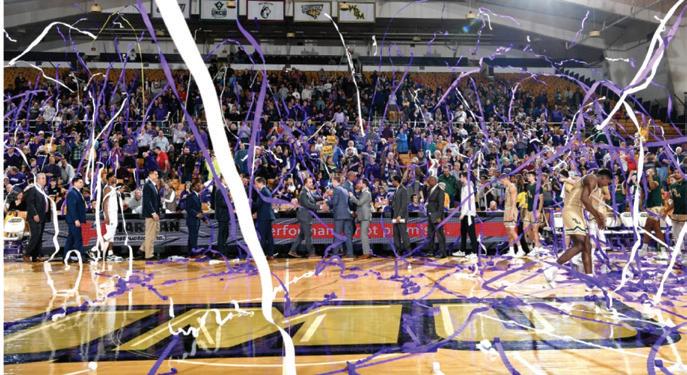





Mozingo said he hopes to make more connections while creating the music that he loves. Landon Shackelford / The Breeze
“I think everybody loves music. It’s something to our core. Music is a language in itself. You can communicate feelings through music, no matter if you know what the person is saying or not.”
Matthew Mozingo
range from acoustics to R&B, pop, hip-hop and alternative sounds, according to his Spotify profile.
Mozingo said he often finds lyric inspiration in relationships, friendships and his life goal. Mozingo said “Luna” — one of his favorite songs — was the first time he’s tried to convey his feelings through imagery.
“The line goes like, ‘Reflecting the source of your light,’ so [with] relationships, or [when] you’re getting to know somebody, you’re reflecting onto them what you want to be perceived as, whereas the moon reflects the sun’s light onto us,” he said. “I was able to use that imagery, and I was so excited about it. This song came out in 2020, and I’m still stoked on [it] today. That was definitely a special song to write.”
Mozingo said he also enjoys collaborating with other artists, calling it a great opportunity to work with musicians of different styles and learn from each other. One of his favorite collaboration projects is an album called “Features,” released in 2022, in which every song he wrote includes artists ranging from rappers to jazz instrumentalists.
“[My favorite part of working with other artists] is watching their process and understanding their process and learning things from other people, and just the magic that happens as a collaboration happens, especially if it’s [with] a friend,” Mozingo said. “As an artist, I can relate to other artists. The best way to connect with somebody as an artist is by making something with them, and that’s been something that’s super special for me.”
Music producer and engineer Lexington Bowler (’17), who’s worked with Mozingo on several projects, said he’s “one of the most genuine artists [he’s] ever met,” and said their collaboration has always been “fun and creative.”
“Matthew is an amazing person. He’s one of those people that’s insanely talented and also a genuine, awesome human being,” Bowler said. “Sometimes you don’t get both — sometimes you get really good talent, and then they’re rude, terrible people. Matthew is the opposite. He’s a fantastic human. Yesterday, he just texted me to check up on me, which he doesn’t have to do. I’m his engineer and friend, yes, but he’s just always looking out for other people. He’s a very genuine human and a very creative and collaborative person in general.”
In March, Mozingo worked with Bowler’s music and technology production class at Stafford High School. Students created beats in each of Bowler’s three classes. Mozingo then chose a winning beat from each class, wrote a song to each beat and recorded the songs live in front of the classroom for the students to see the next step in the music production process.
Throughout their collaboration, Mozingo accepted suggestions from students on takes and ad-libs, or improvisation in his performance. All three songs were released on streaming services in August, with the students credited as producers, Bowler said.
“[Matthew] could write on top of anything — you could hand him any instrumental and he could make something out of it, no matter what the genre is, or the feel, or anything like that,” Bowler said as to why he reached out to Mozingo for the project. “He’s just a very talented writer, and because of that, I knew that this would be a perfect fit, like he could come in and no matter what the kids handed him, he would be able to write songs that he felt good about, that we felt good about, and I knew
he would give a great performance. He was a no-brainer choice when I needed somebody to come in and really nail it.”
Apart from gigs in the Harrisonburg area, Mozingo’s other projects include a new album called “Today,” set to release in November, and another album that he’s working on with Bowler to be released closer to January 2025.
Thursday, Mozingo will perform at Taylor Down Under (TDU) in the first show of the semester for JMU Underground — an organization that hosts concerts at TDU every week. Mozingo’s been a regular performer on the TDU stage since his freshman year and said the experience has been “wonderful.”
“I love the college community,” he said. “The people who support TDU, who support [JMU Underground], are very supportive. They come out and they listen. I’ve had the same people there over and over again, which is wonderful.”
Junior and communications director for JMU Underground Ian Jones said the club aims to give JMU and local artists a stage to perform. JMU Underground serves to be a part of the “musical discovery” for Dukes who are trying to “find their footing in live musical expression,” Jones said.
“Normally, we book artists for the semester based on the responses to our performer interest form that we make accessible via Instagram, but we feel the need to welcome back some artists that are always looking for an opportunity to play and that are just genuinely sincere people,” Jones said. “Matthew Mozingo is one of those people, and we love getting to work with the future star by giving him a microphone and a stage.”
Mozingo said he sees himself playing music in the future and said he has his sights “set high.” He hopes to have his songs doubled in number, as well as receive more fans and exposure. He also hopes to make more connections with people while creating the music that he loves.
“I think the more that I’ve put into music, the more that I’ve gotten out [of it] — positive emotions and positive connections, and it’s just something that I love,” Mozingo said. “I think everybody loves music. It’s something to our core. Music is a language in itself. You can communicate feelings through music, no matter if you know what the person is saying or not, and I think that’s what’s super special about it.”
CONTACT Sixuan Wu at thebreezeculture@ gmail.com. For more on the culture, arts and lifestyle of the JMU and Harrisonburg communities, follow the culture desk on X @TheBreezeJMU and on Instagram @BreezeJMU.


Mozingo said he finds lyrical inspiration in relationships, friendships and his life goals. Photos by Landon Shackelford / The Breeze
Mozingo
SPORTS
EDITORS Hayden Hundley & Preston Comer


Leaving a winning legacy
How JMU’s 2004 National Championship team propelled the program and earned a spot in the Athletics Hall of Fame
By JACKSON HEPHNER
The Breeze
JMU football was warming up for a matchup with Furman when head coach Mickey Matthews first realized the Dukes had a real shot at winning the National Championship.
It was Dec. 4, 2004, and the Dukes were in the second round of the Division I-AA Playoffs — now known as the FCS. Furman was the No. 5-ranked team in the subdivision and just three seasons removed from a National Championship appearance in 2001.
JMU was the underdog — and far from the FBS program it is today. The Dukes had never made it past the second round of the Playoffs and were in the tournament for the first time since 1999.
But when Furman’s loudspeaker informed the crowd that No. 3 William & Mary had just knocked off Delaware — the defending National Champions — Matthews turned to his coaches and said, “If we can win this dadgum game today, we’ve got a great chance to win the National Championship, because we can beat everyone that’s left.”
A few hours later, JMU won that game largely thanks to sophomore quarterback Justin Rascati driving the Dukes 74 yards down the field to take a 14-13 lead with just 28 seconds left. Thirteen days and a 48-34 win over William & Mary later, the Dukes defeated Montana 31-21 to win their first National Championship.
Nearly two decades later, JMU — which began its move to FBS in 2022 — celebrated the ’04 team with an enshrinement in its Athletics Hall of Fame for both the team and its head coach on Friday, followed by further celebrations during the Dukes’ Saturday home opener against Gardner-Webb.
“I’m excited because our names and our team is going to be memorialized at JMU forever,” former safety Rodney McCarter (2001-04) told The Breeze on Sept. 4, “and that is just something that puts a smile on my heart.”
But the recognition for the ’04 Dukes goes beyond just their impact on the field; it’s how they energized the community off of it and ultimately put the program on track to compete across all levels of the sport for decades to come.
“It was pretty immediate, in terms of the transformation from pre-’04 to post-’04,” former linebacker Trey Townsend (2001-04) said.
Building ‘Harrisonburg’s team’
’04 was the culmination of what head coach Mickey Matthews called “a major rebuild” that began when he arrived at JMU in 1999.
Matthews was convinced JMU could be a great spot for him. He was impressed by then-President Ron Carrier and how he created an environment on campus that students loved.
“Ron Carrier could have been President of the United States,” Matthews said. “He had a tremendous presence in a room, he had a lot of charisma, and he just was one of those guys who knew how to run a university.”
But the student body and surrounding community didn’t share that same love for the football program, much to the shock of Matthews. So while he began building up the program, he also spoke to organizations on campus and around Harrisonburg, recruited more local players and became an active community member alongside his wife.
“My goal was to make JMU Harrisonburg’s team,” he said, “and that’s what I did.”
That period of time had some rough years on the field, including a 2-9 finish to the 2001 campaign. But while it may have been hard to see then, the foundation of the 2004 team was beginning to form.
The freshmen that season became the seniors of the championship-winning roster, including McCarter, who started at cornerback late into his true freshman year due to a lack of depth at the position. All in all, the 2001 Dukes featured just 22 upperclassmen.
“In the year, we went 2-9. In retrospect, I probably should have taken some transfers,” Matthews said. “I remember thinking to myself, ‘We just need to keep building. We need to keep building and recruiting freshmen to come in and play.”
Winning with experience
JMU improved the following years with a 5-7 record in 2002 and a 6-6 finish in 2003. All the while, the recruits of 2000 and 2001 saw significant playing time. Former offensive lineman Leon Steinfeld (2000-04) even recalled a spring season during his time when the offensive line had no backups.
“The 2000, 2001 recruits, we played a lot of football in those three years,” McCarter said, “and when it came to 2004, we were just ready.”
That year, the Dukes went 9-2 in the regular season. The first loss was to West Virginia — the Dukes’ only FBS matchup of the year. Despite losing 45-10, JMU kept the game scoreless entering the second quarter, then-senior safety Rodney McCarter said this left an impression on the Mountaineers.
McCarter said West Virginia’s Adam “Pacman” Jones approached junior cornernack Clint Kent after the game. Jones, a future first round NFL draft pick, told Kent, “Look, y’all got a National Championship team here. Y’all go and win that thing,” per McCarter.
The Dukes followed up their showing against the Mountaineers with a statement 20-13 win against Delaware, which was sealed with an 87-yard punt return from senior Cortez Thompson with just 3:04 remaining. Matthews still considers it one of “the most dramatic plays in the history of James Madison football.”
But JMU would slip in its final home game of the season when William & Mary kicker Greg Kuehn hit a 46-yard game-winner to beat the Dukes 27-24. Because of the loss, JMU shared its Atlantic-10 title with Delaware, and William & Mary and didn’t receive home-field advantage for the playoffs.
JMU’s run began at Lehigh, where it squeaked out a 14-13 win. Despite the Dukes’ excitement over their first Playoff game since 1999, Steinfeld remembers being taken aback by the postwin locker room.
“It felt like we lost that game,” he said. “Everyone — just complete accountability and ownership — knew that they did not play a good game, and we were not satisfied with how that game turned out, and I think that’s kind of what in my head, started to think about, ‘I think we’re onto something here.’”
JMU football’s 2004 FCS National Championship winning team was selected into the JMU Athletics Hall of Fame on Sept. 6. The Dukes are the only FCS team to win a title without playing a home playoff game. Photos by Kailey Garner / The Breeze
After defeating Furman, the Dukes got another shot at the Tribe, this time in Williamsburg. Despite playing on the road, Townsend recalled a strong purple-and-gold crowd at each of the Dukes’ playoff games — and at William & Mary, that was evident as soon as JMU arrived.
“It was extremely loud already,” Townsend said. “We could hear them as we got off the bus and the game wasn’t for an hour and a half.”
The Dukes left no doubt in the rematch and then won the championship a week later in Chattanooga, Tennessee. To this day, they’re the only team in FCS history to ever win a title without playing a single home playoff game.
Leaving a lasting impact
In the years following the championship, JMU continued to rise in national prominence. Matthews coached the Dukes for nine seasons, returning to the NCAA Semifinals in
2008 and picking up a signature 21-16 win over Virginia Tech in 2010 before his firing in 2013.
After his departure, JMU made eight straight playoff appearances from 201421, winning another championship in 2016 and appearing in the 2017 and 2019 championship games. The Dukes then began their transition to the FBS in 2022 and have gone 21-5 since.
That success also brought fan support. The 2004 season saw a jump in average attendance from 10,232 the previous year to 12,790 — a 24.9% increase. Last year, with Bridgeforth now holding 11,318 more seats than it did in 2004, the average attendance was a school-record 25,289.
“I go to the stadium now, it’s full, and I kind of smile,” Matthews said. “So many people do not understand how bad it was in ’99.”
During this period, members of the 2004 Dukes made a point to regularly reunite by taking trips, visiting each other’s houses and coming back to campus for
“My goal was to make JMU Harrisonburg’s team, and that’s what I did.”
Mickey Matthews
Football head coach (1999-2013)
games. Those who came to Harrisonburg last weekend even participated in a golf tournament on Friday.
McCarter said the players all still love Mickey, too, and that feeling seems mutual. Before the celebration and accolades he received that weekend, Matthews expressed how he was most excited for his players to receive the recognition they deserved.
“No one knows how hard those guys worked, and I do,” he said. “All the 6 a.m. workouts we went through in the cold weather, when there’s no one around but me and the coaches, those guys worked hard to do what we did. That year, they just refused to lose.”
CONTACT Jackson Hephner at hephnejt@dukes.jmu.edu. For more football coverage follow the sports desk on X and Instagram @TheBreezeSports.


JMU lacrosse players return to the ’Burg post U20 World Championship
By ZACH MENDENHALL
The Breeze
It had been seven years since JMU lacrosse had an athlete represented on the highest international level, but that all changed in game two of Pool A at the 2024 U20 Women’s Lacrosse World Championships when, this summer, sophomore attacker Hannah Lewis and junior attacker Maddie Epke suited up for Puerto Rico and the U.S., respectively.
Epke, Lewis and sophomore attacker Jordan Peterson are the first JMU Lacrosse players to represent the team on an international level since former Dukes Kelly Rabil (2004-07) and Ali Curwin (2012-15) played for Team USA in the 2017 Federation of International Lacrosse World Cup. Peterson played for Team Italy in the 2024 European Women’s Lacrosse Championship but wasn’t selected to the World Championship team. The tournament spanned Aug. 15-24 in Hong Kong, with Team USA defeating Canada 23-6 in the gold medal game.
“I really enjoyed playing such a competitive event, like a world championship, and winning the gold medal,” Epke said. “Getting to meet all new faces and people from around the world that play the same sport, it was cool to go to a place I never thought I’d go.”
The U.S. defeated Puerto Rico twice, with Lewis assigned to take draw controls against Epke — Epke’s “bread and butter,” per Lewis.
Lewis helped Puerto Rico place fifth of 20 teams — the highest it’s ever placed in the World Championships. Lewis said Team Puerto Rico’s opening match against Israel was a “statement win,” as it was a needed victory to secure her and her team’s fearlessness for future games.
Lewis notched five goals in that game, earning her player of the game. Epke also won player of the game nominations in the U.S. game against Israel and in the championship game against Canada.
Lewis’ tryout process for Team Puerto Rico was six months, as she applied for the team in August of last year and was selected in February. Both Lewis’ father and “abuela” are Puerto Rican.
“For me, it was more about making this team to make my family proud, and then taking the experiences that I made along the way,” Lewis said.
Epke submitted an application to compete for Team USA during the winter of her freshman year. Before her sophomore year, Epke qualified for the U.S. training team, which she said was a confidence builder.
“I think I brought that confidence back with me, and that’s why I saw my season erupt more with my sophomore year,
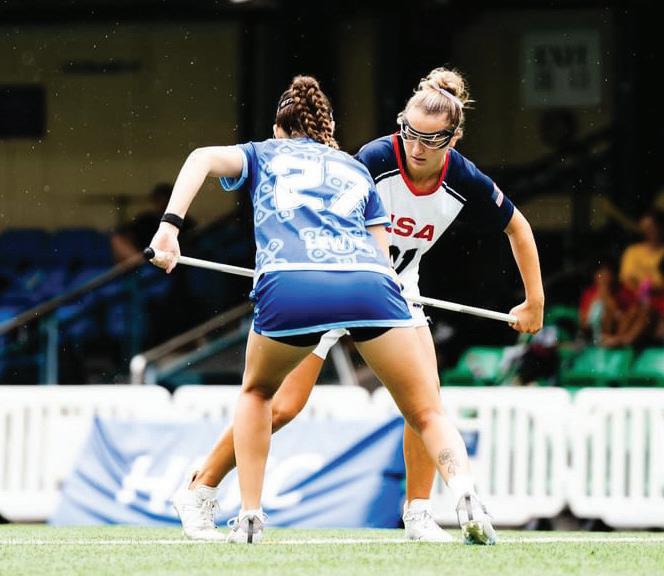
and then hoping to do the same now with the actual playing time experience on the actual national team,” Epke said. “I think that’s really cool for confidence standards and bringing back ideas that we learned from these other top program coaches.”
Lewis said Team Puerto Rico was very excited to play against the “so many great players” on Team USA. Epke introduced Lewis to her teammates in an effort to expand the game, while bringing attention to JMU lacrosse.
“It was really awesome just getting to grow the game and play against each other and bring that attention to our program,” Lewis said. “Everyone was like, ‘Oh, they’re drawing against each other, they’re from the same collegiate program,’ and I think that helped bring some noise back for JMU.”
Experiencing new coaching and playing alongside different athletes allowed Epke to learn more about her draw skillset, she said. Epke played alongside girls from schools like the 2024 National Champions Boston College and Northwestern, as each school had multiple girls on the team.
“It was really awesome to learn from these girls, and also to kind of see their team dynamics,” Epke said. “It was just crazy to think those girls just came off the National Championship game together, and now we’re all here on the same team.”
While Epke played with some of the best in the country on Team USA, Lewis played against them.
Last season, Lewis appeared in 12 games for the Dukes and scored twice on nine shots. She said playing on a national stage prepared her to return to JMU, and she plans to apply what she learned in the World Championships to “fight for more minutes .”
While on the road, both of them visited Disneyland, and Lewis traveled to the Ngong Ping 360 skyline and visited the Ngong Ping Big Buddha statue. Epke immersed herself in Hong Kong’s culture by visiting night markets where she purchased souvenirs. see LACROSSE, page 16
Junior attacker Maddie Epke and sophomore attacker Hannah Lewis faced off against eachother in the U20 World Championship. Photo courtesy of Maddie Epke
TOP: Former JMU head coach Mickey Matthews accumulated a 109-71 record with the Dukes. BOTTOM: The Dukes had a 24.9% increase in fan attendance after the 2004 National Championship.
Both enjoyed the scenery surrounding the stadiums they played in. The tournament’s opening game, semi finals and final were hosted at Mong Kok Stadium in Mong Kok, Kowloon, with quarterfinals at Hong Kong Football Club Stadium and other games hosted at Shek Kip Mei Sports Park.
“The fields were ridiculous; they were in the middle of skyscrapers,” Lewis said. “The view was insane. It’s like mountains on one side, water on the other, then huge city buildings. It was just pretty unreal, it’s nothing like the fields we have here.”
At the tournament’s conclusion, 10 athletes were selected to the All-World Team, showcasing the best players from the tournament. Lewis was in attendance to see Epke achieve her gold medal and place on that team.
“Coming from a gold medal team, it’s kind of a cool experience to bring back that people look upon, and look to you for ideas and things to work on and just how to get better,” Epke said. “Bringing in drills that I took from there that I think could apply really good to us and helping the coaches along with that, too.”
Epke has a group chat with the rest of Team USA, which she said is interesting as many of them will play against each other during the collegiate season. Lewis also has a group chat with her team, and they continued to learn more about each other and develop friendships.
“Showing that we can represent who we are on a bigger stage, aside from playing collegiately and just being proud of who we are in our culture and helping grow the game, can bring more attention to JMU,” Lewis said.
JMU lacrosse released its fall schedule of eight games at the beginning of September. It will face schools like Maryland, Georgetown and Virginia Tech.
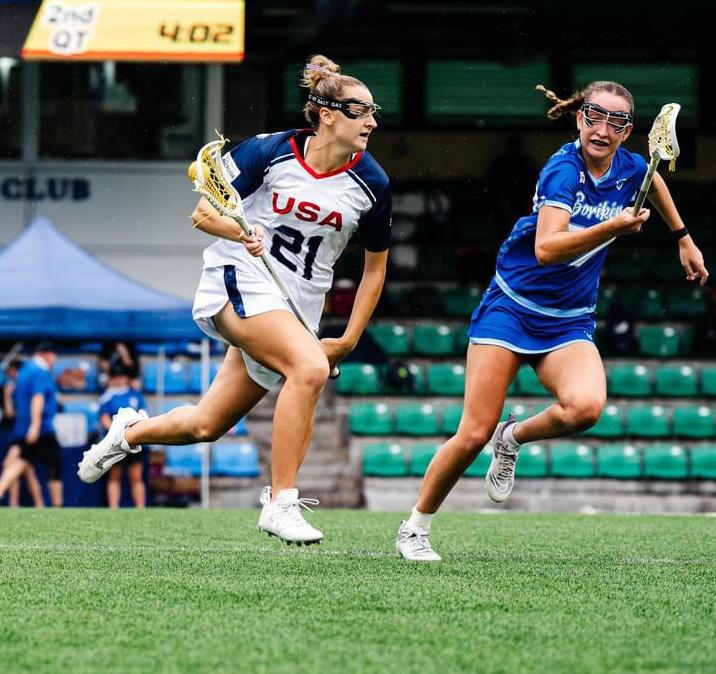
“It’s gonna be a big switch up, because you probably all know that most of our offense left and a lot of our defensive midfielders, so we have a lot of new placement to put in,” Epke said. “It’ll be kind of cool to see how everything falls in place and see how well people work together, so I’m excited to start playing games.”
As a sophomore, Lewis is excited to see a new class enter the team for the first time and witness how different roles are filled.
“I think coming back just having that international experience and the experience of being a leader on that team, I think I have more skills and tools to use to be more vocal and be more of a leader this year, which is something I think my coaches will love,” Lewis said.
CONTACT Zach Mendenhall at mendenzl@dukes.jmu.edu. For more lacrosse coverage, follow the sports desk on X and Instagram @TheBreezeSports.


Junior attacker Maddie Epke had 57 goals and 23 assists for JMU last season. Photo courtesy of Maddie Epke

EDITORS’ PICKS
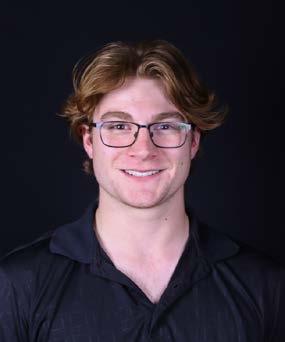


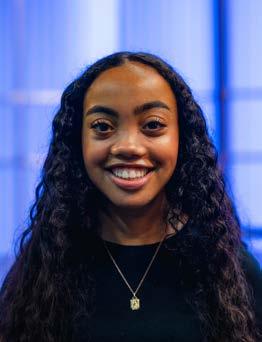


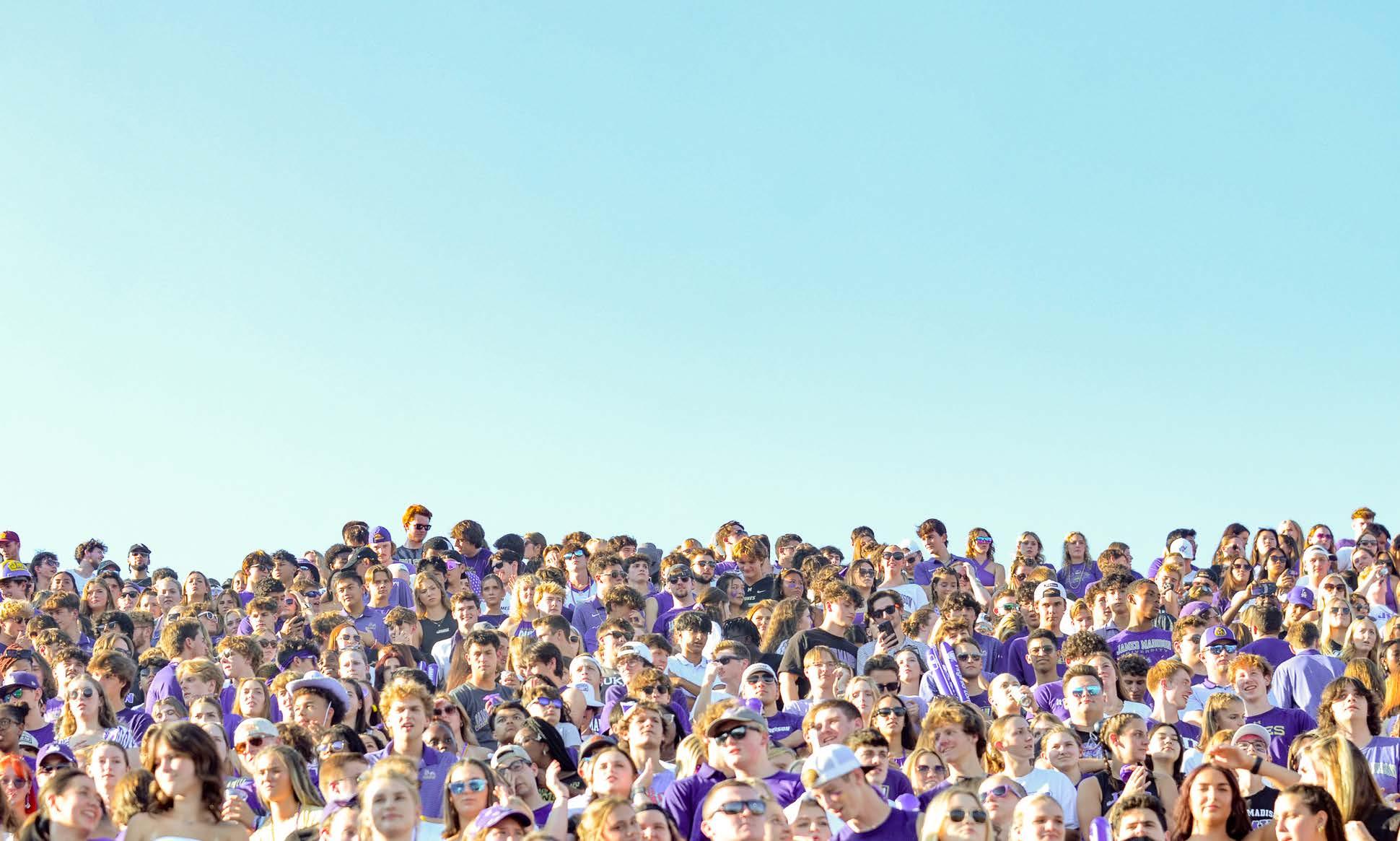

Ella Austin / The Breeze
Maya Skurski

Want to praise someone or get something off your chest? Darts & Pats is the place to do it. Submit your own at breezejmu.org.
A “learn-to-drive” dart to the cars who don't follow the Virginia pedestrian crosswalk laws on campus and to JMU P.D. for not enforcing them.
From someone who doesn't want to become Flat Stanley.
A “never-enough” dart to student tickets for running out so quickly every time.
From a senior who just wanted to go to their last first home game.
An “excuse-me” dart to a rude student duiring Saturday's football game.
From a JMU alumni who knows students shouldn't act like that.
A “right-on-time” pat to the ICS bus for getting me to class on time.
From someone who had to park in Chesapeake and wasn't going to make it on time by walking.

Sick season: Upperclassmen lend first-year students their advice on how to avoid early-semseter infections

EMMA CURRIE | contributing columnist
Moving away from home comes with a million emotions all at once. As you arrive on campus for the first time, you’re more than likely filled with excitement, unfamiliarity and, all of the sudden, a stuffy nose. Finally you finish unloading the last storage bin or box, you sit down to enjoy your new room and … ACHOO!
You blink and the next thing you know, you’re at the University Health Center (UHC) asking them for help. UHC, located on the second floor of the SSC, provides inclusive and confidential care to all Dukes. It offers office visits, in-house laboratory tests, immunizations and more. Students can make an appointment through MyJMUChart or by calling the phone number listed online. As much of a difference it can make, the UHC does have its limits.
It can be difficult to balance schoolwork, friendships, self-care and everything in between. That being said, stress can take a huge toll on the immune system. Firstyear students may feel two of the most common types of illnesses before midterm week: homesickness and regular sickness — nicknamed freshman flu. With the lack of sleep, different food, stress, unfamiliar environments and new germs, it’s onethousand percent normal to feel ill. This, unfortunately, makes the UHC extremely busy at the beginning of the semester.
Sophomore pre-nursing student Hadden Decant said during her first semester at JMU, she was sick all the time, and “being emotionally upset tied it all together.”
“I had strep throat a few times and got multiple sinus infections,” Decant said. “The dorm air first-year is so nasty.”
In order to combat the illnesses she experienced, Decant went to the UHC. She took multiple prescribed supplements to boost her immune system, attempted to eat well, drank lots of water and prioritized sleep.
“The Health Center helped a lot,” Decant said.
While Decant received help from the UHC, she had a few tips and tricks for
students who can't get an appointment to help combat first-year illnesses: “an air purifier, supplements, eat whole foods, drink water, move your body, etc.” During Decant’s first year, she had “a medicine box that was like a mini-Target. It was insane.”
“It had every medicine you could think of: vitamin C, vitamin B, zinc, vitamin D and more,” she said.
A Breeze Instagram poll asked Dukes how often they got sick during their first year. Some students said it felt like 1000 times, while others lowballed and responded with, “at least two.” A few believed they were sick the entire year, so they responded with, “100% of the time,” and others said it felt like they were sick more often than they were healthy.
The same poll asked students to rate their illness’ severity on a scale from one to 10 — 10 being the worst. 32% (50 respondents) voted it was between seven and 10, and 45% (70 respondents) voted it was between four and six. 22% (34 respondents) voted it was between one and three.
63% (91 respondents) of voters said they went to the UHC for help when they were feeling under the weather, however, 37% (54 respondents) said they did not. Out of those that did seek care at the UHC, only 55% (56 respondents) believed it was effective, while 45% (46 respondents) voted it was not.
The same Instagram poll asked respondents if they had any tips for new/ incoming students who may experience sickness this year. Respondents replied with answers including:
"Getting sick your first year of college seems inevitable, unfortunately. Being in a new environment, surrounded by strangers, fresh experiences and germs is a lot for one's mental and physical health. To enjoy your time at JMU, listen to those who came before you and be prepared! You’re not only aiding your own recovery but strengthening your resilience for future endeavors as well."
CONTACT Emma Currie at currieeg@dukes.jmu.edu For more editorials regarding the JMU and Harrisonburg communities, follow the opinion desk on Instagram @BreezeJMU.

A student's typical medicine kit, prepared with items needed to fight ailments. Photo illustration by Landon Shackelford / The Breeze
Graphic by Maya Skurski, quotes taken from a Breeze Instagram poll.
Inequality in college admissions process demands fairer opportunities nationwide
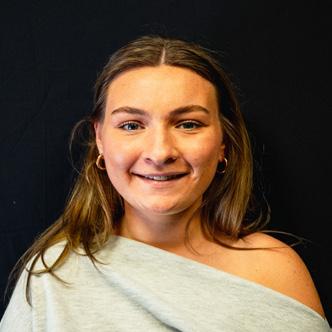
ANNABELLE BERRY contributing columnist
College institutions
honorably advocate for a diverse student body, yet underlying systemic inequalities undermine this claim in the contemporary admissions process.
In a 2014 article, The Baltimore Sun’s editorial board found most college admissions websites assert: “We seek to admit the most interesting, able and diverse class possible.”
Schools are tasked with balancing an incoming class of students with exceptional grades, high-ranking test scores, unusual life experiences — such as socioeconomic struggles and lack of parental guidance and educational support — as well as outof-state applicants.
Economic advantages transform a college application, revealing socioeconomic disparities in educational opportunities. Comparably, wealthier students have easier access to Advanced Placement (AP) which offer collegelevel courses in English, math, history, languages and more or Dual Enrollment courses. These courses provide a chance for students to be enrolled in two different academic institutions at the same time, such as a high school and community college. This serves as an attempt to earn a high school diploma and work toward a college degree at the same time. Alternatively, in underfunded administrative divisions, these courses are inaccessible. In other cases — such as in freshman Ryan Mangiere’s — some schools don’t offer these courses to begin with.
“It was a setback to see friends from different high schools coming in with more credits than me, such as Dual Enrollment community college courses, since my high school didn’t offer them,” Mangiere said. “A university was likely to choose an application with AP or Dual Enrollment credits over mine.”
Financially flourishing schools can more easily support sports teams, clubs and art programs. Involvement in these activities sets a student apart from other applicants. The combination of collegelevel courses and extracurriculars assists students in assembling a versatile resume that universities value. Residents in underserved communities have fewer opportunities to engage in school organizations or advanced courses, keeping their applications from standing out.
On top of that, the extent of parental guidance during the college application process affects one’s chances of admission. According to a 2022 Education Advisory Board survey of 4,848 high school seniors, nearly half classified “parental influence” as one of their top-five sources during their admissions process. The article finds that lower-income students are less likely to depend on parental support than higherincome students when applying to college.
Freshman and first-generation student Karen Reyes said she agrees with this study. Reyes also said she struggled with researching colleges, planning her class schedule and purchasing college necessities without parental support.
“I had no one with college experience to tell me that scheduling all five classes in one day was crazy,” Reyes said.
JMU’s undergraduate program is only 12% first-generation students, while VCU’s freshman class includes 37% first-generation students and 21% at the University of Lynchburg. Not only are first-generation students overlooked, but they’re often inexperienced with criteria included in a college application. For example, if a student failed a virtual course during COVID-19 due to extraneous reasons, they may be unaware of the opportunity to explain this on college applications without the help of someone who went through the process.
Freshman Joseph Clarke had the help of his parents, who are both college educated. Clarke said his college applications were easier thanks to this support, as his parents helped edit his essay and encouraged his engagement with clubs in high school.
“My parents were essentially the reason I had an application worth reviewing,” Clarke said.
Even though high school students’ parents may encourage them to enroll in challenging courses and, as a consequence, they may fail to make full use of the educational opportunity, they still acquire an academic advantage over students without that motivation. This puts them on a level playing field with students who willingly decide to take advanced classes out of self-motivation. Thus, their achievements may go unrecognized during the admissions process.
It’s routinely easier to get into a university as an in-state student rather than out-of-state. JMU Admissions posted a summary of the 2023-2024 admissions, revealing that 3,466 in-state students enrolled and 1,474 out-of-state students enrolled. There’s also a theory that some colleges exhibit bias toward in-state students due to preference and relatability — though it’s hard to tell whether JMU falls into this category. U.S. News reported that schools and states are establishing enrollment caps, otherwise known as a restriction, on the number of out-of-state students admitted each year. Therefore, these students must achieve higher test scores and grades in comparison to in-state students to be considered for admission at many institutions.
Out-of-state students also pay higher tuition than in-state students. While this additional money is useful to universities, it forms a financial barrier for out-ofstate students. These students have fewer chances for financial aid and scholarships, since most of these opportunities are tailored specifically for in-state residents. The disparity in price may dissuade qualified students from applying. This leads to a less diverse applicant pool and perpetuates the imbalance of a diverse study body that universities claim to seek.
Raising awareness about these inequalities cannot be accomplished individually. Efforts are required from those with economic privilege, parental support and in-state advantages.
To decrease the inequity, increased funding for underprivileged high schools is crucial.
Grade schools and colleges can also play a salient part by integrating college preparatory courses and educational counseling programs. Offering free workshops on essay writing and English classes focused on college applications during high school can
also impact a student’s application. By fostering community engagement, students, parents and educators can advocate for institutions to achieve and appreciate diverse experiences as well as overcome obstacles to create a more equitable and inclusive admissions process.
CONTACT Annabelle Berry at berry3aj@dukes.jmu.edu For more editorials regarding the JMU and Harrisonburg communities, follow the opinion desk on Instagram @BreezeJMU.

The higher education system is too
much of
a financial risk for students

From the lack of transparency of private loan companies to students’ willingness to breeze past information, young adults are vulnerable to becoming indebted by attempting a fouryear degree. To put it simply, college can be too much of a financial risk.
At JMU, tuition for in-state is $32,248 annually, whereas out-of-state costs $49,482. Where college has been normalized as what to do after high school, the price tag attached to a fouryear education has severely spiked compared to what prior generations paid.
The routes on how to pay for college vary. Some students are fortunate enough to have their families cover their education, whether that be by paying for it straight up or being covered by benefits such as military affiliations.
Most students try to use the Free Application for Federal Student Aid (FAFSA), to get the federal government to help pay. This works out well for students coming from lower-income situations, whereas students from middle to higher income families don ’ t receive as much aid because of their family’s comparably higher income. For students who won’t be getting any help from their families, they ’ re faced with the task of finding ways to pay for school themselves.
This is when students would apply for grants, scholarships and private loans — all good options if handled properly.
“We recommend going through FAFSA first, act on those and then use private loans as a last resort,” Associate Vice President for Enrollment Management Financial Aid Director Brad Barnett said. Barnett said for the 2023-24 school year, there were roughly $120 million in total JMU student loans — this amount comes from a combination of federal loan programs, student loans and parent loans. Dukes and their parents have roughly $87 million in federal loans and $33 million for private loans.
As students, hearing this makes the thought of paying for school feel impossible. JMU’s Associate Director of Loans, Colleen McAvoy, offers this piece of advice: “Maintain an awareness of what you are getting into, take the time to slow down and take in all of the information.” Students like out-of-state senior Natalie Reitano have taken out loans since freshman year. Now, Reitano struggles with what to do about the loans she signed four years ago.
CAROLINE MCKEOWN contributing columnist
Graphic by Ella Austin.

from FINANCIAL RISK, page 19
“I had no idea how I was supposed to pay them back,” Reitano said. “If I don’t make six figures coming out of college, I will probably be dead before they are paid off.”
She’s not the only one. The average student takes 20 years to pay off their student loan debt. With the pressures students face in the current economy, there’s a high probability most students will not graduate and immediately begin those six-figure jobs.
While college is a very appealing idea, there are other routes with less financial risk you can take. There are apprenticeship programs and trade schools where you’re getting paid while training. There is military service, where you could leave the service and get school paid for by the government.
If you’re still feeling like you want to go to college just because you feel you’re supposed to, there’s even more value in a gap year. You can work to save up money for college or travel to see what interests you. This is a much better alternative than just attending a college for a year to see if you like it. If we break tuition down to just one semester, that’s the equivalent of a roughly $16,000 investment into something a student might not be committed to. A gap year would save money in the long run and help you figure out what you want before committing.
If a student does feel like college is the right move for them, there are beneficial ways to go about loans.
“Make sure to pick a college you can afford, apply for all the financial aid you can and control your spending habits,” Barnett said.
College spending habits are another reason why college might not be the best option for someone. With sororities and fraternities come dues, merch and trips — all of which isn’t considered when breaking down student loans and financial aid. With social settings in college — including bars, booze and parties — it can be a completely normalized money pit.
While some might feel it’s worth the money, it’s important to be realistic when deciding if college and the atmosphere is one you can flourish in.
Even after graduation, students have to be smart about how to proceed — whether it be graduate school or applying to jobs, loans and their interests.
“A mistake I made when consolidating my student loans, which can be common for students consolidating loans or selecting a different repayment plan, is unintentionally extending the length of my repayment,” McAvoy said. “This can result in paying more interest over time.”
While a college degree is a viable option for many students, they need to be aware of the risks surrounding loans and college’s financial demands. Higher education can be more than worth the price for some students, but there are still worthwhile and safer options outside of college as well.
CONTACT Caroline McKeown at mckeowcf@dukes.jmu.edu. For more editorials regarding the JMU and Harrisonburg communities, follow the opinion desk on Instagram @BreezeJMU.


Breeze file photo.
A monetary collage created out of a $100 bill and cents. Landon Shackelford / The Breeze
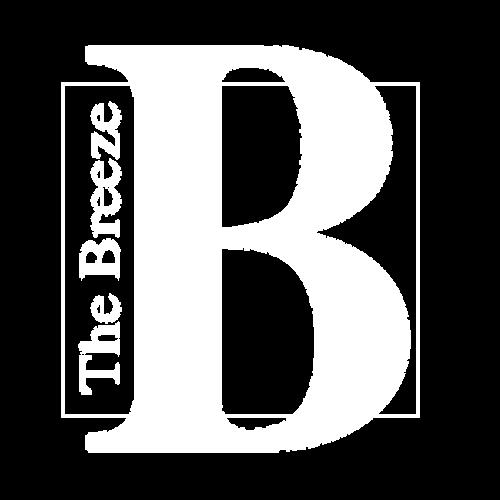
Corrections
(8/30/24): The cover photo was taken by Grace Sawyer, not Landon Shackelford as was indicated on page three.
(8/30/24): A correction has been made to more accurately reflect JMU Chief of Staff David Kirkpatrick’s description of his role as the Board of Visitors' secretary.
(9/5/24): A correction has been made to the online edition of the story “Tim Kaine, Democratic candidates urge early voting during Labor Day celebration,” changing the wording of Sam Nickels’ sign from “Stand with Palestine” to “Stand against genocide.”
(9/5/2024): A previous version of the “A Wealth of Health: How to hack meal prep” article contained incorrect information regarding where reusable containers are provided and what food items are allowed to be taken to-go from dining halls. Reusable containers can only be used at Market 64, Memorial Corner Bistro, Festival Food Court and Bistro 1908. The only items that can be taken to-go at dining halls are dessert and fruit items.


The Breeze
Editorial Staff
EDITOR-IN-CHIEF Eleanor Shaw breezeeditor@gmail.com
NEWS EDITORS
K. Mauser & Libby Addison breezenews@gmail.com
COPY EDITORS
Mallory Evans & Hannah Kennedy breezecopy@gmail.com
PRINT MANAGING EDITOR Morgan Blair breezepress@gmail.com
CULTURE EDITORS Abby Camp & Sixuan Wu thebreezeculture@gmail.com
PHOTO EDITORS Kailey Garner & Landon Shackelford breezephotography@gmail.com
Advertising Staff
ONLINE MANAGING EDITOR Kasey Thompson thebreezeweb@gmail.com
SPORTS EDITORS Hayden Hundley & Preston Comer breezesports@gmail.com
AUDIENCE EDITORS Madalyn Cornwell & Madeline Buynak thebreezesocials@gmail.com
CREATVE DIRECTOR Sam Rhinard
OPINION EDITOR Maya Skurski breezeopinion@gmail.com
ART DIRECTOR Ella Austin thebreezeartdirector@gmail.com
TV NEWS DIRECTOR Alexa Bonilla jmubreezetv@gmail.com

Tune in to Breeze TV LIVE every Friday at 3:30 p.m.
Scan the QR code to view the livestream.

Patti Varol
By Sala Wanetick & Emily Biegas




Tribune Content Agency, LLC
MADISON MARKETPLACE
Madison Marketplace is open for business, and all text-only listings are FREE ! Post job listings, announcements, rentals and more using our online placement tool. Ads run two weeks online and in two print editions.
STUDENT JOBS SERVICE
DISCOVER YOUR BEAUTY
Improve your inner and outer beauty naturally. Build and improve your self-confidence and self-esteem, be your best self, and become better at everything you do. To learn more about my new services, please request my FREE introductory e-brochure. Thank you.
Winstonkphillip@gmail.com
HOUSING
SHORT AND MID TERM HOUSING
I have 2 properties. One is short term, VRBO, ID # 2574384 . The other is mid term ,Furnished Finder ID# 521465. Both are located just north of Harrisonburg, call 540-820-3838


CITY OF HARRISONBURG, VA
Start gaining experience in your desired career field or simply earn some extra cash for the school year!
Visit www.harrisonburgva.gov and click on employment for more details.

Graphic Designer Wanted
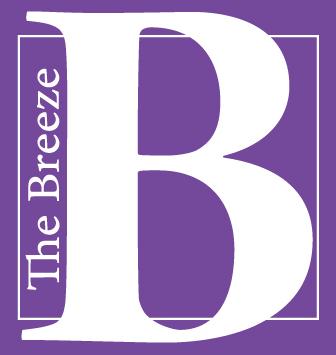
The Breeze, JMU’s award-winning student media organization, seeks a student graphic designer for print and online advertising. Job requirements include creating ads fro clients, collaboration with Advertising coordinator, page layout and design. Must be deadline oriented. Knowledge of Adobe software and previous design experience. EOE. Apply at jobs.jmu.edu
JOBS
Photo Booth Attendant
Need reliable student to transport mirror photo booth & assist at events. Must be available weekends. Great for earning extra cash! Call 5408103165.


| www.thaiharrisonburg.com
The best place for banking isn’t a bank at all!


CommonWealth One is JMU’s trusted, full-service credit union, and student banking is better here. We’re conveniently located on campus and offer everything you might need financially as a student. What we don’t have? Excessive and unnecessary fees.
When it comes to handling your finances as a student, we’ve got your back with: The secret is out – CommonWealth One is here to help you thrive financially at JMU.
To open an account or learn more about JMU Student Perks, which include special events, free food and prizes, visit cofcu.org/DUKES or stop by our branch in The Union (next to the post office)

The Union (Next to the Post Office) Monday – Friday: 9:00 am – 5:00 pm
